Part 1: What are the Backyard Photos?
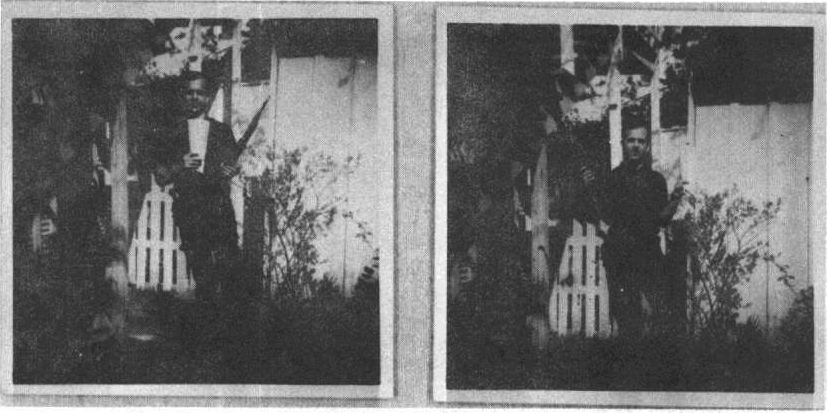 |
The backyard photos are among the most contentious items in the record of the JFK case. These portraits of the accused assassin Lee Oswald are strikingly odd, as his clothing, posture, demeanor, and accessories combine to strange effect. There is something undefinably askew in the photographs, and it’s not just that the socialist papers are so at odds, or the firearms are out of context in the domestic yard setting, or that the Oswald figure seems bent at an unnatural angle. There’s a certain patness to the incriminating content, with the future accused man apparently posing with the future murder weapons and signaling a radical political bent which could present motive for his murderous action. This patness encourages a view that the photos are “too good to be true” and the elements of incrimination too obvious, such that the photos may be forgeries, as the accused assassin himself had stated. The oddness of the photos, immediately apparent, supports this view.
Most discussion of the backyard photos falls within partisan divides: supporters of the government’s version of events tend to accept both the authenticity of the photographs and the narrative of their creation, while critics point to inconsistencies and details within the photos which suggest they are forged composites. This divide has tended to polarize discussion of the backyard photos - they are authentic! they are fake! - such that many salient issues which could assist an understanding of these strange images get overlooked. A review of the backyard photos and their context as developed in the official record can assist in bringing such issues to the foreground.
Backyard Photos Discovered Amongst Oswald’s Possessions
At 4:30 PM (CST) November 23, 1963, the Dallas Police Identification Bureau received two negatives matching photographic prints showing “Lee Harvey Oswald holding rifle with scope.” Earlier in the afternoon, Dallas Police detectives had undertaken a second search at Ruth Paine’s home in Irving, Texas, concentrating on the small one-car garage where seabags, suitcases and boxes belonging to Lee Oswald were stored. The Investigation Report (CE Stovall D) states ”found by Dets. Rose was two snapshots and negatives showing Oswald holding the rifle (murder weapon) and wearing a pistol in a holster on his right hip (Tippitt murder weapon).”
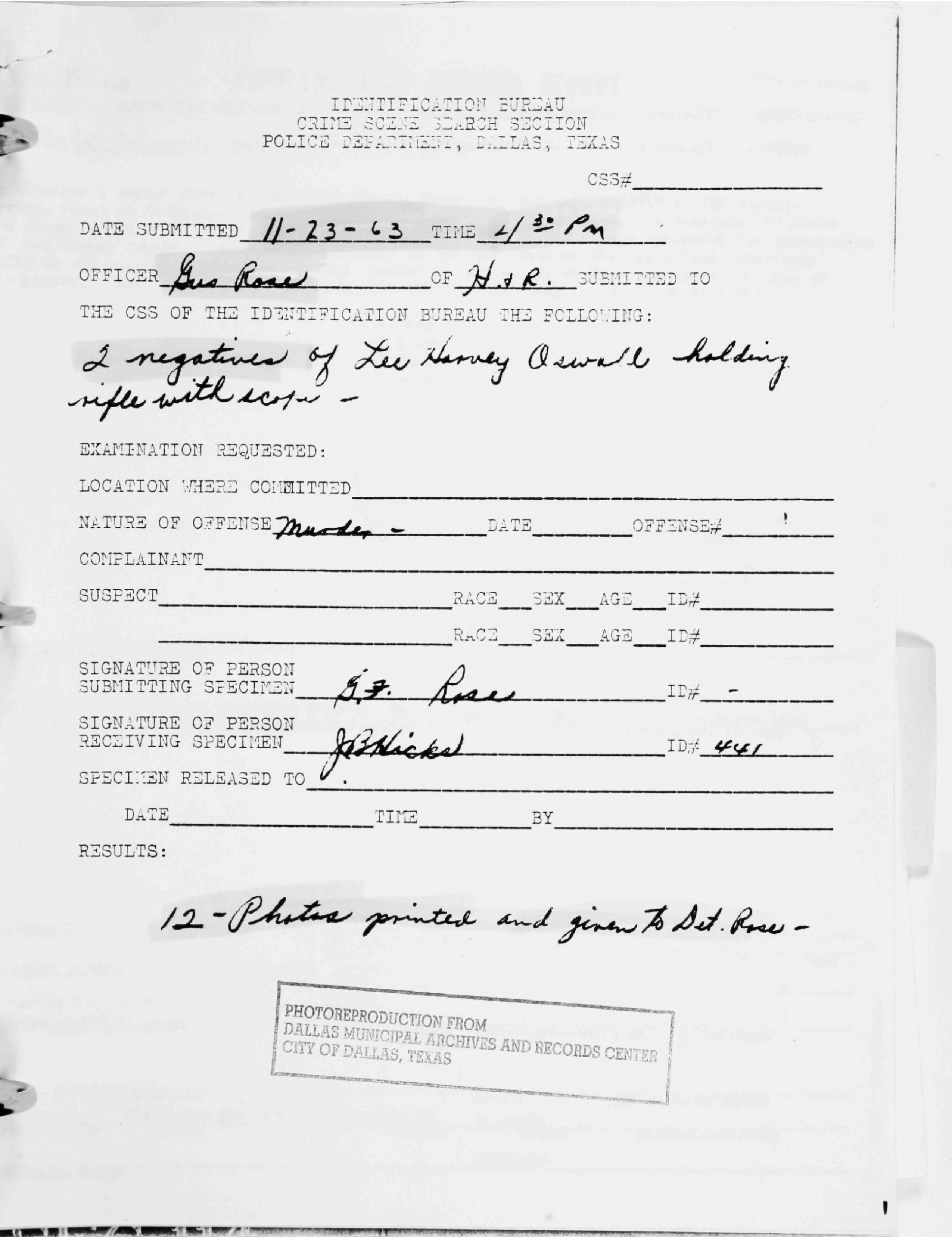 |
The Identification Bureau would create copies from the negatives, including an 8x10 enlargement of the backyard photo later identified as 133A (CE134). An hour later, at approximately 6 PM, Lee Oswald underwent another round of questioning and was confronted with the enlargement. Oswald rejects it as a fake, claiming “somebody has superimposed my face on that picture” (Rose WC testimony). Oswald is subsequently shown the found print of the second photograph, 133-B, which he dismisses as simply a smaller version of the larger doctored print. He accuses the Dallas police of being responsible for the creation of a fake photograph and states he will not discuss this photograph further without the advice of an attorney. Oswald assures his interrogators that he was familiar with photographic processes and would, in the fullness of time, demonstrate the technique used to create this composite.
At this same time, the content of the photos was being leaked to reporters. The Dallas Police had been under pressure all day to explain their certainty the suspect was indeed the president’s assassin. At a press scrum, Police Chief Jesse Curry’s announcement of the other big discovery of the day, the Klein’s order letter for the mail order rifle, was upstaged by inquiries regarding these photos:
Q. These are the photographs of the revolver and the rifle?
A. There is a photograph of him with a revolver on his hip and holding a rifle in his hand.
Q. Does it look like the one you have, that you think is the murder weapon?
A. It does.
Q. Does it have a telescopic sight?
A. It does.
Q. Is he aware of this?
A. I don’t believe he knows all this as yet. I think the captain is talking to him about this at the present time ...
Q. Did he have in his hand a copy of the communist publication The Worker? With a headline “Be Militant”?
A. It seems there’s two papers there. On one you can see the words Be Militant. On the other you see The Worker ...
Q. Do you consider the case shut tight now, Chief?
A. We will continue to work on it and get every shred of evidence that’s possible.
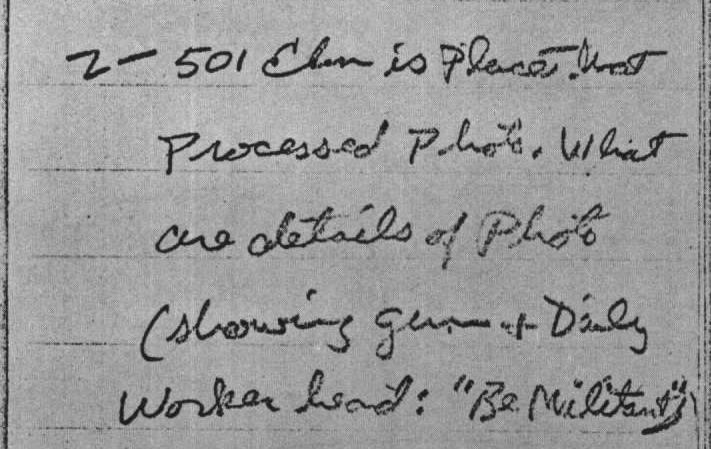 |
The link of the alleged murder weapons with the suspect, although more tenuous than initially portrayed, was publicized as a major breakthrough and helped harden opinion that Oswald was the assassin ahead of his own murder. The presence of radical left wing literature in the photos also helped solidify a portrait of Oswald as a dangerous communist. Curry’s misreading of a newspaper banner - Be Militant instead of The Militant - is indicative of a particular frame of reference, and explains a note jotted by reporter Seth Kantor: “Ask Fritz ... 501 Elm is place that processed photo. What are details of photo (showing gun & Daily Worker head: “Be Militant.” (CE Kantor 3)1
Backyard Photo Leaked To the Media
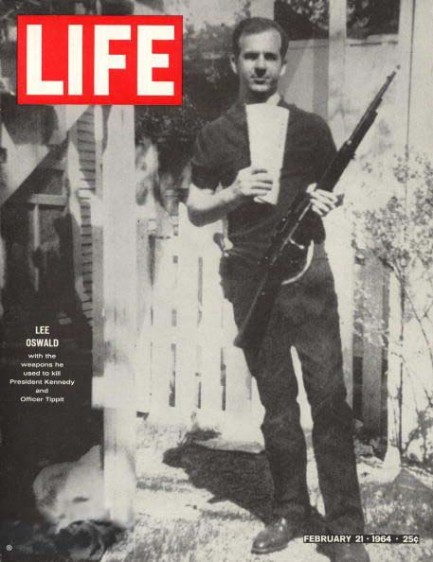 |
In early 1964, the backyard photo identified as 133-A was sold and/or released to several newspapers and magazines, resulting in wide public dissemination, most notably on the cover of Life Magazine’s February 21 issue. The release of the photo was considered a serious breach of the Warren Commission’s confidentiality, and the FBI was tasked with investigating “how the press got hold of the photo.” The FBI responded energetically, focusing resources in numerous cities.
Officially, an FBI summary (CE1788) would report that Dallas Police officials Will Fritz, George Doughty, George Lumpkin and Carl Day, acknowledge multiple copies of both backyard photos were made for investigation purposes immediately after the assassination, but they knew nothing concerning the dissemination to the media. Captain Fritz would refer to information published in the March 2 edition of Newsweek, claiming that Life Magazine and the others bought their copy of the photo from representatives of Marina Oswald.
An internal FBI memorandum dated March 25, 1964 is far less circumspect, stating: “Based on our investigation it would appear all of the photographs emanated from the Dallas Police Department.” The Dallas Police, as the HSCA would later confirm, “made numerous copies and did not control the dissemination.” Life Magazine negotiated a price of $5000 with Marina Oswald’s business agents for the publication rights to the photo, but the photo itself came from “an enterprising young man in the Dallas Police Department.” Life had an “original copy negative” of the photo, made in Dallas. (Shaneyfelt Exhibit 10)2
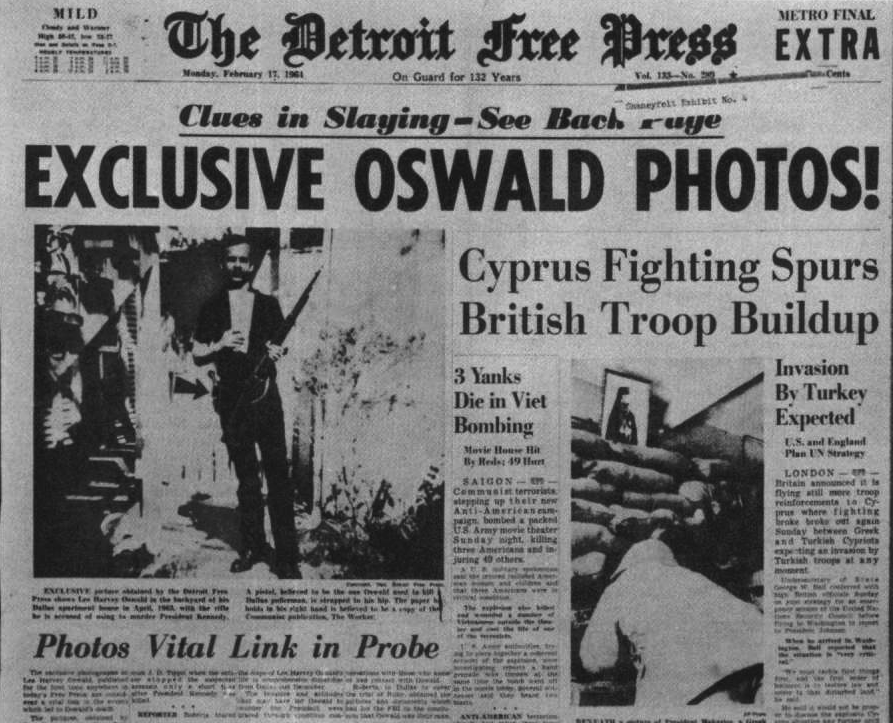 |
Retouching photographs ahead of publication, for reasons of aesthetics or for technical quality, was routine practice in the print media. Eventually, inconsistencies from this work between various published versions of the photo became publicized by critics, and the Warren Commission was compelled to apply additional resources addressing this issue. Getting to the bottom of the controversy allowed the Commission to appear resolute in debunking yet another dark rumor. In all, the unauthorized February leak of the photo worked well for the Commission and the generation of the official story. The cover of the February 21 issue of Life single-handedly stamped the image of Oswald brandishing a rifle and militant socialist literature into the consciousness of millions of persons (several Warren Commission witnesses refer to “the picture published In Life” when discussing a backyard photo). In Life’s accompanying nine page “clinical study” of Lee Oswald’s biography, lone nut behavior patterns are emphasized and left-wing connections identified.
The Warren Commission and the Backyard Photos
Using the witness testimony of Marina Oswald bolstered by technical reports from the FBI’s photographic specialist Lyndal Shaneyfelt, the Warren Commission would assert that the backyard photos were taken by Marina at her husband’s request, using an Imperial Reflex camera which was owned by Oswald, and that this probably occurred on March 31, 1963. Further, the Warren Report determined that the rifle seen in the photographs was the same rifle found on the sixth floor of the School Book Depository and believed to have been used to kill the President.3
The FBI’s Shaneyfelt used a comparative negative technique to determine that the Imperial Reflex camera in evidence had taken the backyard photographs. Snapping a new picture using this camera allowed for a comparison of this new negative with the backyard photo negative 133-B. Unique marks and scratches created by the camera on the edge of the image could be identified, and then checked against other negatives to find similarities which could link them to this same camera. Shaneyfelt also identified a photo taken near General Edwin Walker’s home, found among Oswald’s possessions, with this camera.
Following the publication of the Warren Report, the backyard photos came under sustained criticism. Mark Lane discussed issues related to the February photo leak in Rush To Judgement, while Sylvia Meagher offered a substantive critique of the logic of the backyard photos, and the shortcomings with the evidence, in Accessories After The Fact. Researchers versed in photography challenged the authenticity of the photographs themselves, proposing that some form of superimposition was utilized to create a fraudulent Oswald snapshot, a view which gained momentum as it was discovered that this had been Oswald’s position while in custody. In the mid-1970s, as interest in the case was building ahead of the HSCA, news documentaries produced by the BBC in Britain and CBC in Canada featured photographic experts who concurred that fakery was evident.
New Backyard Photos introduced to the Record
The House Select Committee on Assassinations asked a specially convened photographic panel to examine controversies associated with the backyard photos, particularly (if not solely) the question of their authenticity. The panel would examine the photos from a primarily technical basis, using forensic techniques to determine “evidence of fakery”, reproducing to some extent work done by the FBI’s Shaneyfelt in 1964, but with more sophisticated techniques. The panel would also identify and describe the various prints in the record, as new versions of the photos appeared through sources connected with the Dallas Police, including, incredibly, a previously unknown third backyard photo (designated 133-C).
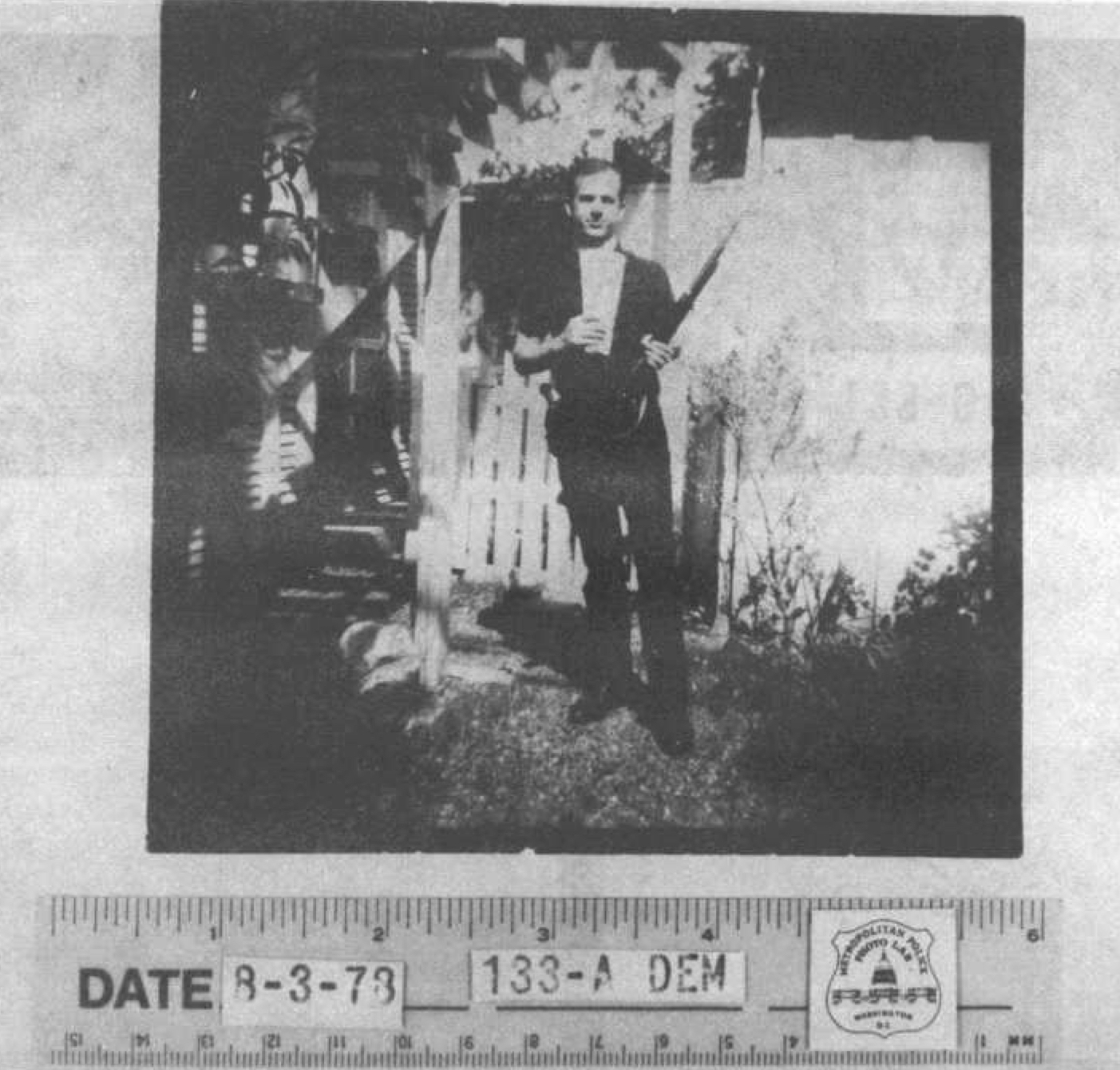 | 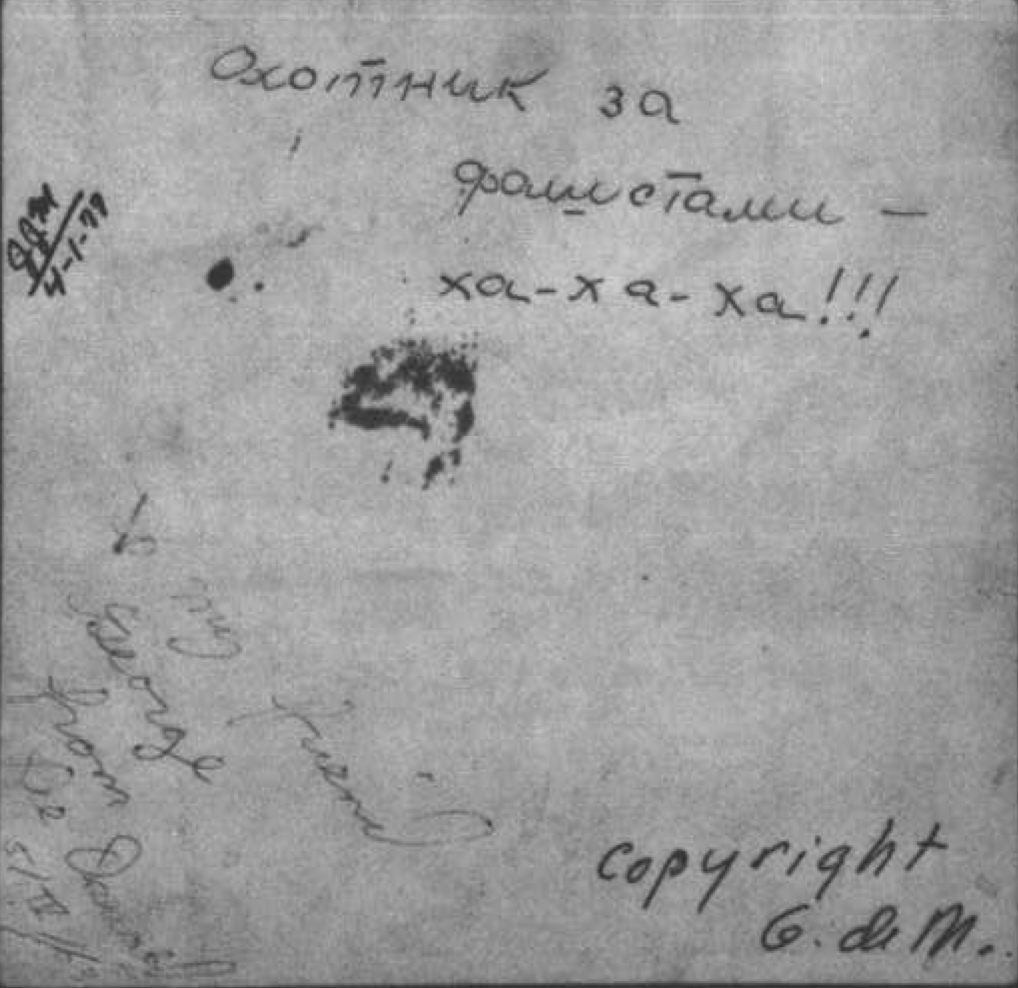 |
133-A de Mohrenschildt The de Mohrenschildt backyard photo was apparently discovered in February 1967 by Jeanne de Mohrenschildt, inside the sleeve of a record album found at a Dallas storage unit the de Mohrenschildts had secured ahead of their move to Haiti in April 1963. The record album, an instructional Russian/English language LP, had been lent by Jeanne to Marina Oswald, and was found with similar albums inside a box which had been placed in the storage locker sometime after the de Mohrenschildt’s departure, perhaps through Everett Glover and Michael Paine.
The photo was deemed a first generation print of 133-A (although some researchers believe the Oswald figure’s arms are held higher), with markedly higher detail and resolution compared to the originally discovered prints. On the back side of the photo are two inscriptions. One says “To my friend George from Lee Oswald 5/IV/63.” The other, written in darker ink, is Russian cyrillic translated as “hunter of fascists ha-ha-ha!!!” This second inscription appears to have been written over the top of other writing which had been erased. The HSCA commissioned a handwriting expert who determined that the first inscription matched Lee Oswald’s known handwriting. The second inscription was thought to have been written by Marina Oswald. The subject was broached during an interview, with the now Mrs Porter, on September 13, 1978:
Mr. McDONALD ... do you recognize the handwriting?
Mrs. PORTER. No, I don’t ... you have certain way of writing, habit of writing certain letters, so I know for sure that I could not, I do not write certain letter that way. So at first I thought it was maybe my handwriting, but after I examine it, I know it is not ... this is something like maybe foreigner would try to write it, you know, to copy Russian language.4
In his manuscript “I Am A Patsy”, George de Mohrenschildt described how he viewed the photo as a “gift from the grave” from Lee Oswald. If it was a “gift”, an assumption since the print’s origin and presence inside the record album remain mysterious, then, presuming the April 5 1963 inscription date correct, Oswald passed on an opportunity to present it directly when the de Mohrenschildts apparently paid a social visit the following weekend, what would turn out to be their last meeting.
Ruth Paine testified to the Garrison Grand Jury convened in New Orleans on April 18, 1968 that she had met the de Mohrenschildt’s only twice, once at the Everett Glover party in February 1963 where she was first introduced to the Oswalds, and a second time in 1967 precipitated by the discovery of the photo. “They called and asked Michael and me to come have dinner with them ... he said he found in his luggage the same picture that appeared in Life Magazine of Oswald holding the rifle and the gun on his hip, and it gave him such a turn, it was afterward, after the assassination, and we just talked generally of the events.” Considering the centrality of both the de Mohrenschildts and the Paines to the Oswald’s lives in 1962-63, talking “generally of the events” appears as an understatement.
Jeanne deMohrenschildt passed the print on to the HSCA in 1977, shortly after her husband’s apparent suicide (which remains controversial).
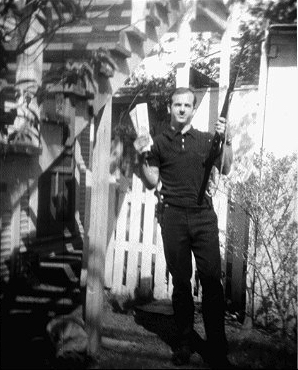 |
133-C Dees In late December 1976, a print of what was termed an “additional view” of the backyard pose was passed to the House Select Committee by Mrs Geneva Dees. According to a staff summary of an interview with Mrs Dees, the print “had been acquired by her former husband, Roscoe White, now deceased, while employed with the Dallas Police at the time of the assassination.” Roscoe White has assumed some notoriety for numerous reasons, including that his tenure with the DPD began only a few weeks before the assassination, assigned to the Identification Bureau where the backyard negatives would be delivered. White, according to his family members, had experience with “trick photography”. Previously he had been in proximity with Oswald in the late 1950s, as they were occasionally in the same places while serving with the Marines.
133-C Dees was deemed by the panel as a first-generation print, which would indicate the corresponding negative was also in possession of the Dallas Police. This negative is not in the record. The existence of this third pose, as a print or negative, is not accounted for anywhere in the official recounting of the investigation or the generated paperwork. However, when the Dallas Police and Secret Service photographed a recreation of the backyard photos on location a week after the assassination, the pose struck by the photographed officer was that seen in 133-C. Astonishingly, the House Select Committee expressed muted, at best, curiosity regarding this photo and the missing negatives.
133-A Stovall / 133-C Stovall These prints were delivered to the HSCA in April 1978 through Richard Stovall, who had been one of the Dallas Police detectives involved with the search of the Paine household in November 1963. These were also deemed first-generation prints, created from negatives which are not in the record.
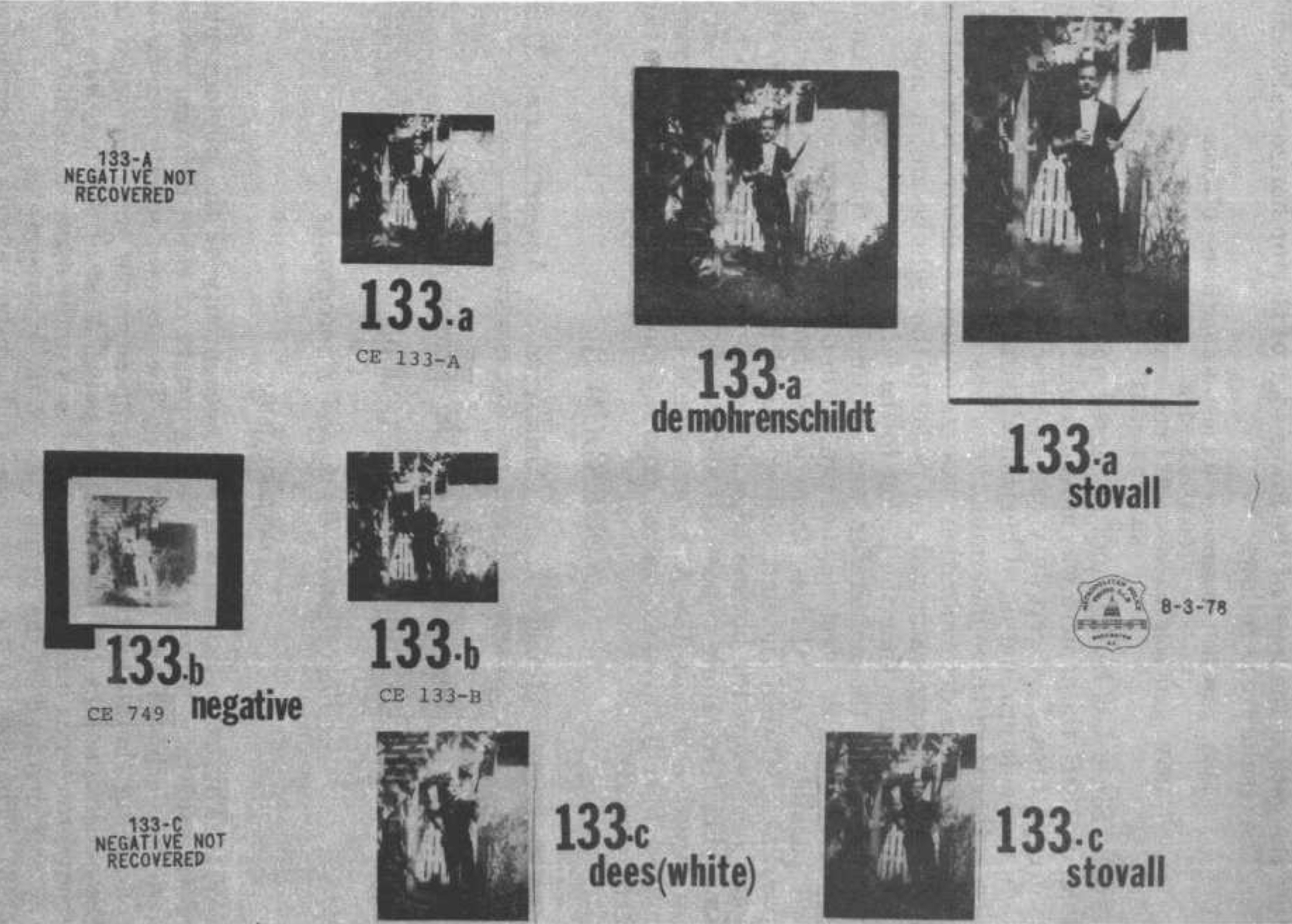 |
According to the HSCA photographic panel’s analysis, the backyard photo prints in the record were created using at least four different processes, representing at least five unique printing events.
The two prints originally found among Oswald’s possessions were described by the panel as “drugstore or photofinisher prints because they appeared to have been produced on the type of commercial photo printing machine used by photofinishers for camera stores, drugstores and mass-produced prints.” The prints are small (3”x3”), with a white border and markings consistent with an automated commercial machine. The de Mohrenschildt print is larger (5”x5”) and described as “probably made in a high quality enlarger with a high quality lens” due to its increased resolution. The panel notes that “the entire negative area is printed” (showing more picture than the cropped “drugstore” print), and that the print had yellowed, “indicating that it was not adequately fixed or washed during the development process”. Another print of 133-A (Stovall), was larger (5”x8”) and cropped on the sides. The two prints of 133-C (Stovall / Dees) were 8”x10”, the same size as the blow-up print shown to Oswald a few hours after discovery (CE134).
Although the HSCA panel does not directly speculate, their review indicates that the original roll of film which exposed the backyard photos was processed at a common commercial photofinisher, the de Mohrenschildt version possibly created by Oswald at his Jaggars-Chiles-Stovall workplace, and the other prints were created at various times at Dallas Police headquarters.5
The HSCA Panel Determines The Backyard Photos are Authentic
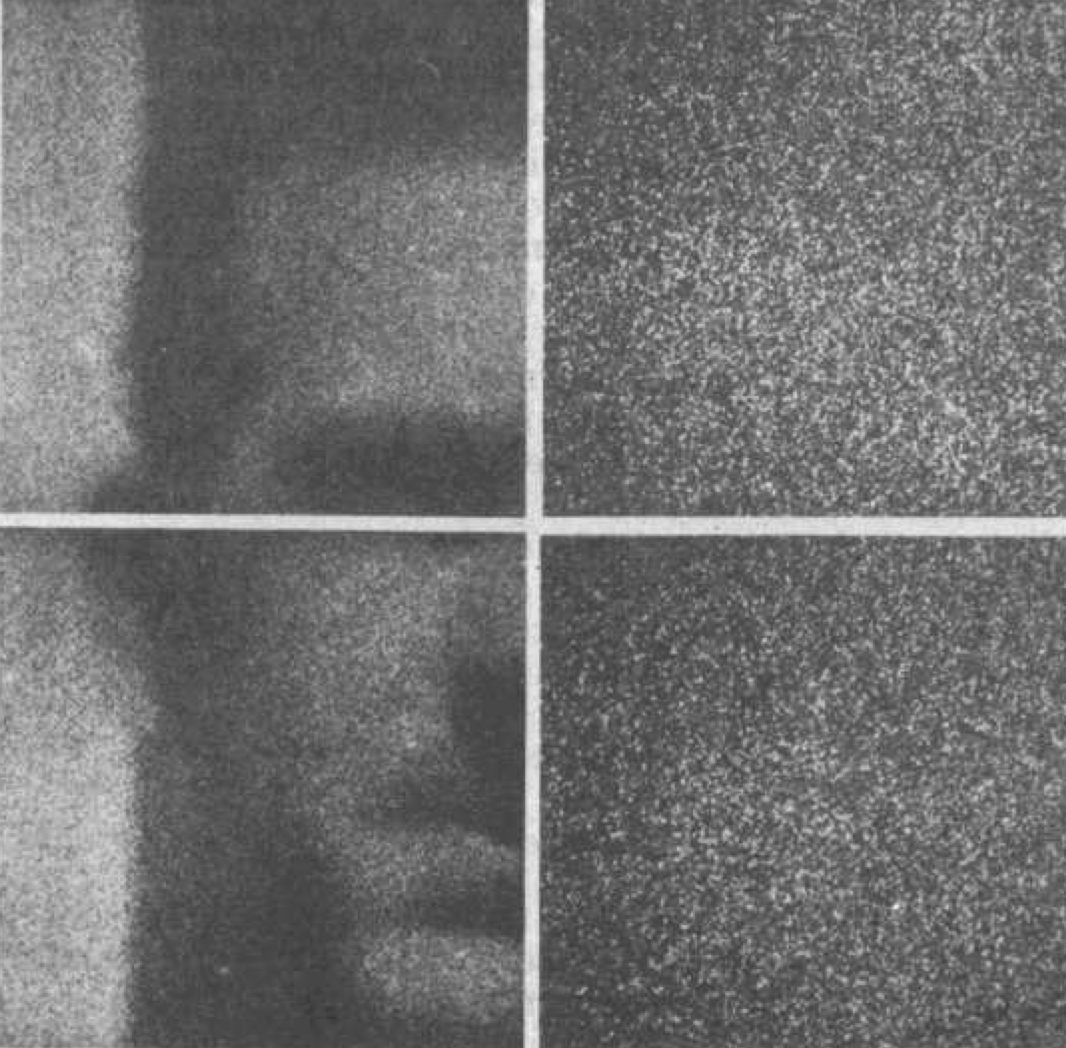 |
The House Select photography panel’s real work, as evidenced by their report’s exhaustive detail, was to determine the authenticity of the backyard photos. Questions concerning the photos which were non-technical in nature were therefore not addressed. The panel implicitly accepts two crucial assumptions: 1) the Imperial Reflex Duo-Lens camera identified as having produced the photographs was “Oswald’s camera”; 2) Marina Oswald operated that camera to produce the photos.
Stressing that the panel conducted their forensic analysis of the backyard photos utilizing the best available materials - the one negative and the seven known first generation prints - the Photograph Authentication section of the HSCA Report details results of digital image processing examining consistency in the film grain, stereoscopic techniques to determine if superimposition had been applied, and photogrammetry to establish measurements of objects and shadows. These are all accepted and proven techniques for forensic examination of photographs. The panel also undertook numerous controlled experiments to examine specific points advanced by critics: identical heads from photo to photo, inconsistent body proportions, unnatural and inconsistent shadows, and unnatural lines in the vicinity of the subject’s chin. The result of this analysis: “Careful examination of the photographs with respect to lighting, perspective, sharpness, distortion, grain pattern, density, and contrast revealed no evidence of fakery.”
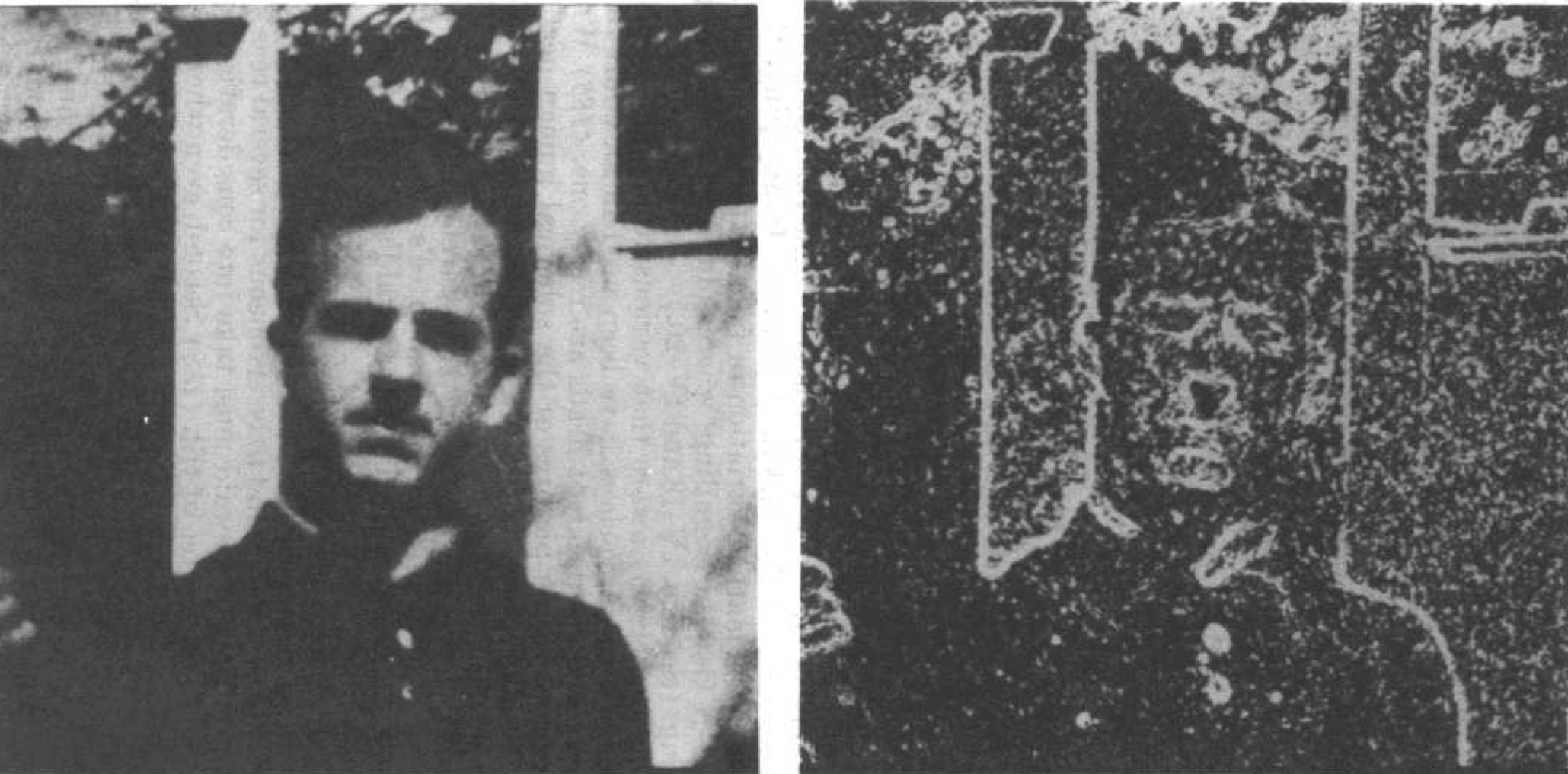 |
Malcolm Thomson, the British photographic expert who determined for the BBC that the photos had been faked, and also the unnamed Canadian analyst who did the same for CBC, were then contacted. Both men were presented with the panel’s findings and asked to respond. Thomson, noting the thoroughness by which the panel had investigated the issue, “deferred to the panel’s conclusions”, and added that he had been working from generational copies rather than first generation prints. The Canadian analyst also replied that he had been examining “very poor copies”.
Thomson, however, did maintain that the subject’s chin in the backyard photographs was “suspiciously different” and that a well-done fake would be difficult to detect, digital image processing or not. Indeed, both the FBI’s Shaneyfelt in 1964 and the HSCA panel in 1978 concede that a determined skillful forger with access to high quality equipment and then also to the Imperial Reflex camera in evidence, could have faked the backyard photos. Therefore, a categorical assertion of “authenticity” is not possible, and that someone may have superimposed Oswald’s face onto another man’s body cannot be ruled out.
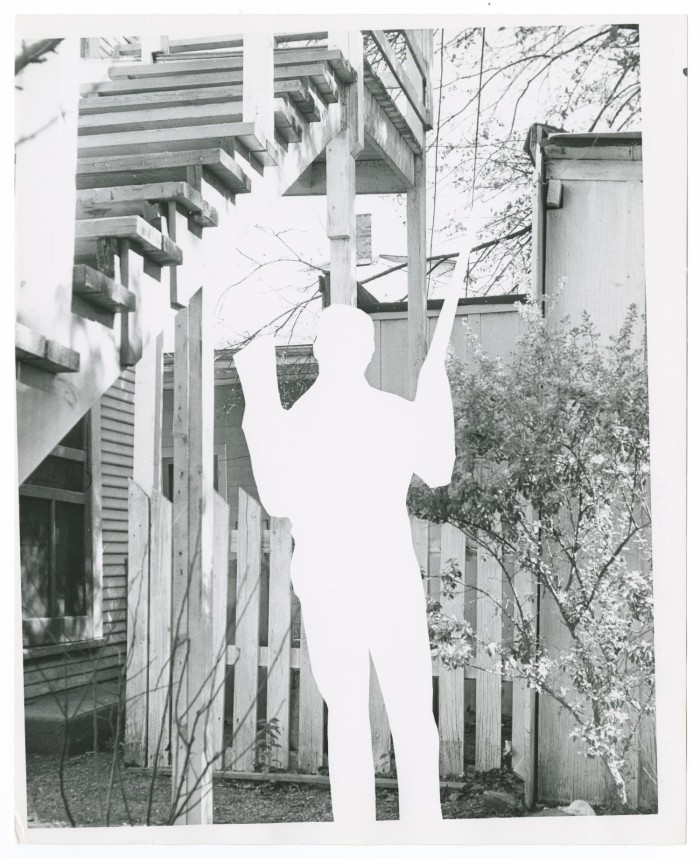 |
A counterfeiter creating such forgeries would require: access to the Neely Street backyard; assistance from at least one other person; access to a Mannlicher-Carcano rifle and a pistol; access to the specific issues of The Worker and The Militant; access to the Imperial-Reflex camera; and access to a photo featuring Oswald’s face (or two or three similar photos of Oswald ) for superimposition. Dallas Police recreations staged at the location on November 29,1963 show mature flowered plants behind the subject and therefore date the backyard photos themselves, or at least a photo of the backyard used for a later composite, as generated some months ahead of the assassination. The counterfeiter would likely possess knowledge of a plot involving Oswald. Alternatively, it cannot be ruled out that photos were taken in the Neely St backyard featuring an unknown male subject for a reason unrelated to the future assassination, possibly with Oswald’s assistance, and then later appropriated for another purpose by superimposing Oswald’s face.
In light of the panel’s extensive forensic work, using the existing negative and first generation prints, the weight of probability does support these photos as “real”, absent a technical challenge to this analysis or specific information regarding a forgery operation. However, regardless of the thoroughness by which the House Select Committee’s panel approached its subject, by limiting its investigation solely to the authenticity of the photos themselves, the panel bypassed two equally compelling questions which bear weight especially if the photos are considered “authentic”: was the camera which was identified as having taken the photos actually “Oswald’s camera”, and did Marina Oswald actually take the photos?
Part 2: Was the Imperial Reflex Actually Oswald's Camera?
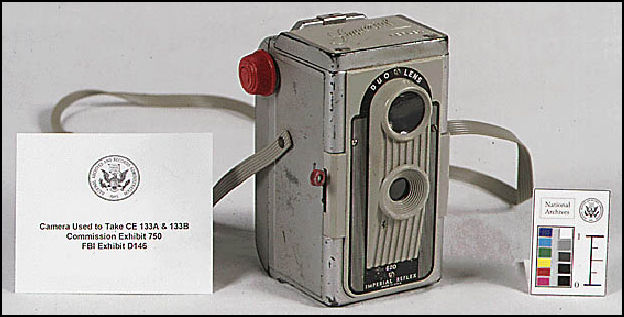 |
The official investigations accept without question the attribution of the Imperial Reflex camera as owned by Lee Oswald. The Warren Commission refers exclusively to the “Oswald camera”. The HSCA Report references “Oswald’s camera”, as does the House Select testimony of Cecil Kirk from the photography panel.
The camera itself was described in the Warren Report as “a relatively inexpensive, fixed-focus, one-shutter speed, box-type camera, made in the United States”. (WR p593) That description, while accurate, sells the camera a little high, as it could also be described as a cheap all-plastic body wrapping a minimal array of flimsy elements. The lower lens sent light to the film plane, while the upper lens sent an inverted image to the viewer, which was accessible by popping open the top plate. The small red lever at the front opened the shutter, and the larger red knob at the back advanced the film.
This Imperial Reflex camera does not appear in the inventories of Oswald’s possessions seized by the Dallas Police at the Paine address in Irving and the North Beckley room in the Dallas neighbourhood of Oak Cliff. Investigations determined that Oswald owned a “Russian camera” and an “American camera”. A Russian-made Cuera-2 camera appeared in the inventories, as did an American-made camera called a Stereo Realist. The Imperial Reflex camera only came to light, in the possession of Robert Oswald, about three months after the assassination and presumably after it had been determined that the Stereo Realist camera could not be linked with the backyard photos.
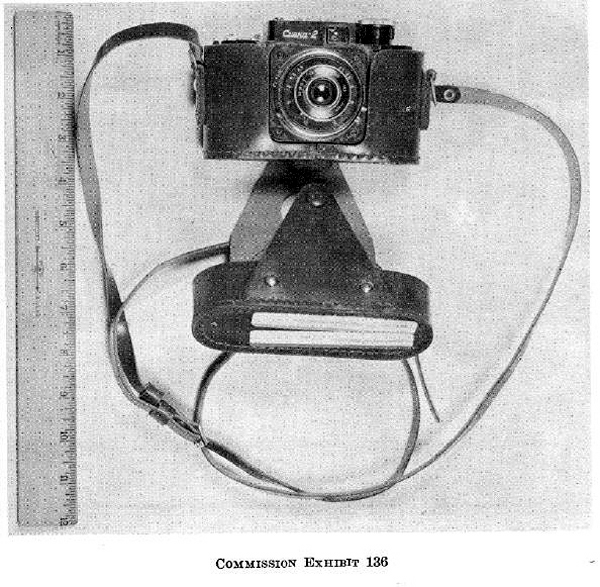 | 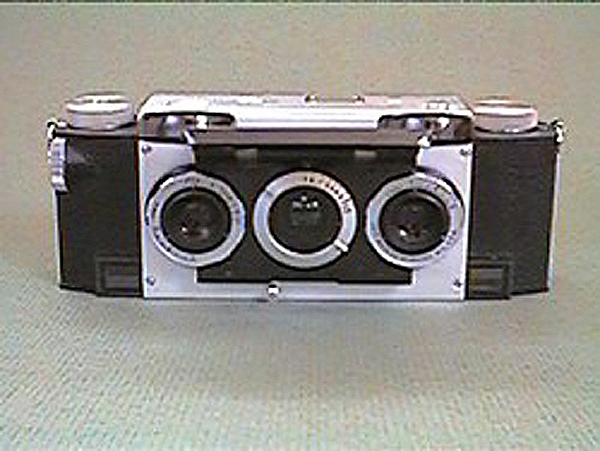 |
| Russian Cuera-2 camera | “American” Stereo Realist camera |
A timeline of events as the ownership of the cameras was developed is illuminating:
| 11/28/63 | “(Marina) was asked whether she or Lee had any cameras and she replied that Lee bought one camera in Russia and a second one in the United States ... She added that she was not proficient with operating any cameras as she never had an opportunity to do so.” | (CE1792) |
| 12/2/63 | “(Marina) said that they had two cameras, one Russian and one American, but she does not recall with which camera she took the (backyard) photograph.” | (CE1401) |
| 1/29/64 | “The other camera owned by the OSWALDS was a United States made camera which LEE HARVEY OSWALD had owned prior to his entry into the U.S. Marine Corps and this was the camera which he had taken pictures with when he was in the Marine Corps ... (Marina) said the ‘Cuera-2’ camera appears to be the Russian camera and the ‘Realist’ appears to be the American made camera.” | (CE1155) |
| 2/16/64 | “ROBERT LEE OSWALD ... viewed photos of a Stereo Realist camera and and a Cuera-2 camera and advised that he did not recognize either of the cameras as having been the property of LEE HARVEY OSWALD, but also stated he was not familiar enough with the cameras ... to either state that the cameras in question did or did not belong to LEE HARVEY OSWALD.” | (CE2557) |
| 2/17/64 | “(Marina) was also shown the photograph of the Stereo Realist ... She stated it was not the property of OSWALD as far as she knew. She advised to her knowledge she had never seen this camera ... ” | (CE1156) |
| 2/18/64 | “(Marina) advised that she believed she took the photograph with the American camera which OSWALD owned ... She said the American camera had a greyish color, somewhat like aluminum. It was a box-type camera ... She can recall that she sighted the camera by looking down into the viewer at the top of the camera ... ” | (CE1404) |
| 2/19/64 | “RUTH PAINE ... advised that approximately three weeks after the assassination ... ROBERT OSWALD ... came to her residence and requested that they take all the remaining property belonging to LEE HARVEY OSWALD ... she pointed out to them the boxes and other materials in her garage belonging to the OSWALDS and they removed this property.” | (CE2557) |
| 2/24/64 | “ROBERT LEE OSWALD made available a Duo-Lens Imperial Reflex camera made in the United States of America. It is aluminum colored ... ROBERT OSWALD advised that in about 1957, LEE HARVEY OSWALD purchased a camera at about the time he first went into the U.S. Marine Corps ... About 1959 ... he left this camera with ROBERT at Fort Worth, Texas. In about August 1962 ... LEE HARVEY OSWALD regained possession of this camera from ROBERT.” | (CE2557) |
| 2/25/64 | “Imperial Reflex camera obtained from ROBERT LEE OSWALD ... was exhibited to MARINA OSWALD at which time she identified it as the camera belonging to LEE HARVEY OSWALD with which she had taken the picture of OSWALD holding the rifle and newspaper and wearing the pistol.” | (CE2557) |
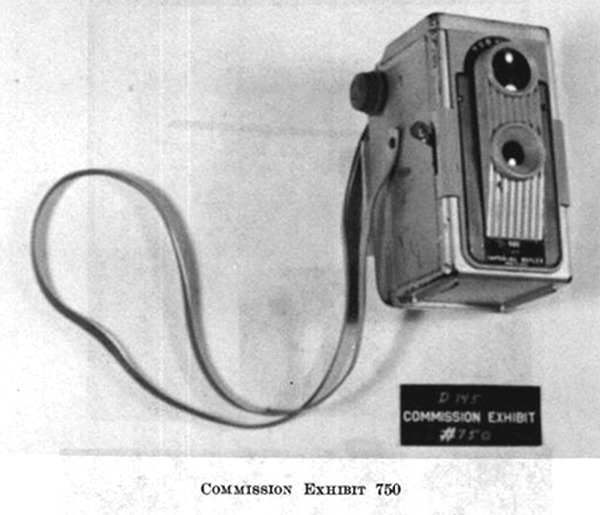 |
Robert Oswald would claim he “had never made this camera available to authorities before February 24, 1964, because he had never been asked for it previously and he could see no evidentiary value ... of this cheap camera ... He stated that it had never occurred to him that anyone would be interested in the camera.” (CE2557) This is after he had been specifically interviewed about and shown photos of cameras (February 16). It would also turn out to be the second instance in which a subjective judgment apparently kept this camera away from the sweep of the investigation. Marina Oswald temporarily stayed with Robert Oswald in February 1964, coinciding with the FBI’s determined efforts. She was thereby in the same house as the Imperial Reflex and, a week later, she suddenly recalled the camera was “aluminum” colored and that it was sighted “by looking down into the viewer”.6
The FBI Closes The Circle
The discovery of the Imperial Reflex would create something of a loose end in the developing official narrative since it was unclear how the camera could have been overlooked during the thorough Friday and Saturday searches of the Paine residence the previous November. On February 19, 1964, the same day Ruth Paine advised that a box of miscellaneous items was passed to Robert Oswald (five days before the camera was “found”), the FBI interviewed Irving Police detective John McCabe, who had attended both searches of the Paine household. According to the FBI, McCabe is “certain that he saw a light gray box camera in a box in Mrs PAINE’s garage. MCCABE stated that this camera was in a box which contained books and photographs belonging to LEE HARVEY OSWALD. MCCABE stated that he searched this box and did not take the camera since he did not consider it to be of evidentiary value.” (CE2557)
On March 14, Dallas Police Detectives John Adamcik, Richard Stovall, Gus Rose and Henry Moore - who conducted the searches of the Paine residence - are interviewed by the FBI. They are shown a photograph of the Imperial Reflex camera. “None of these officers could recall ever seeing this camera and did not recall seeing it during a search of the garage at the PAINE residence. They all stated that if it had been discovered during the search, they would have brought it in.” (CE2557)
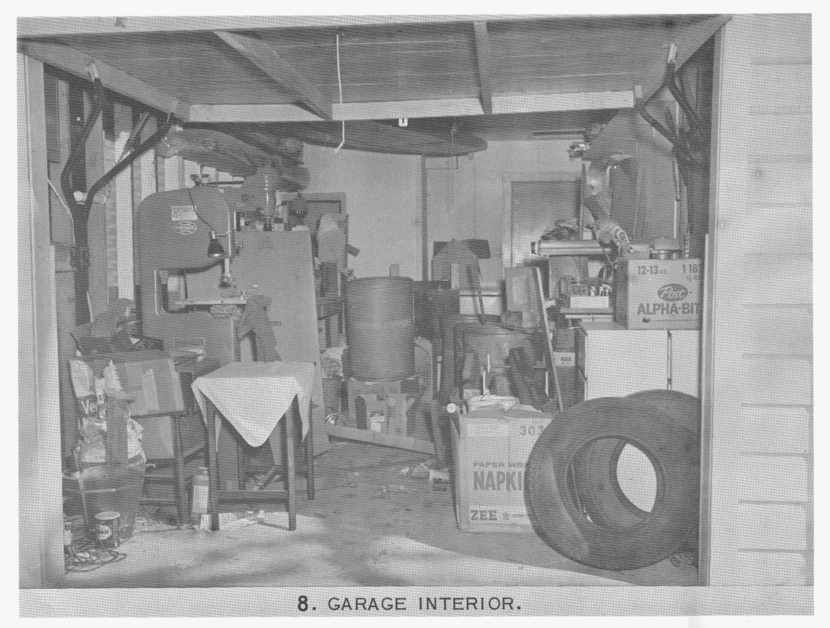 |
| The Paine’s garage |
McCabe is interviewed again by the FBI on March 23. He tells of “going through a box containing some books, some pictures, and a camera. He took the camera out of the box, put it on a dresser and searched the box in detail, and then put the camera back in the box.” He is shown a photograph of the Imperial Reflex camera received from Robert Oswald a month earlier and “he stated the camera in this photograph appeared identical with the one he described ... in his opinion the Dallas Police Officers, who were also participating in the search, did not see this camera and did not search this particular box. He stated he had already searched the box and told them so. He did not point out the camera to them.” (CE2557)
On March 23/24,1964, the four Dallas officers are also interviewed once more. They “all advised that during the search of the PAINE residence they recalled that there were several boxes in the garage at the PAINE residence and that all boxes were searched by one of the officers participating in the search ... all stated that they definitely did not see the Imperial Reflex camera ... or any other camera in the PAINE garage.” (CE2557)
McCabe was at the Paine household as a representative of the Irving Police Department since the Paine home was so located, but the Dallas detectives were responsible for the search. How could a camera be found inside a box which also contained photographs “belonging” to the suspect, and yet be considered of no evidentiary value? In McCabe’s March 23 interview he says the camera “appeared in such poor condition that he believed it was not capable of taking pictures.” The box handed to Robert Oswald by Ruth Paine, in which the camera was said to be found, was presumably the same box searched by McCabe. This box was itemized by the FBI. It contained thirteen books, including six Russian books and a book on Marxism, some random items such as dice and a pencil sharpener, but no photos or pictures are listed. The original inventory list from November 23, 1963 (CE Stovall D) notes a “grey metal box containing miscellaneous Russian literature and some slide negatives”, but no camera.
McCabe was not called before the Warren Commission nor does he personally appear in the record again. He does feature in the one anomaly in the testimony of the Dallas Police officers regarding the discovery of the backyard photos. Gus Rose (but no one else) gives McCabe some agency in the search: “I found two negatives first that showed Lee Oswald holding a rifle in his hand, wearing a pistol at his hip, and right with those negatives I found a developed picture ... and Detective McCabe was standing there and he found the other picture – of Oswald holding the rifle.”
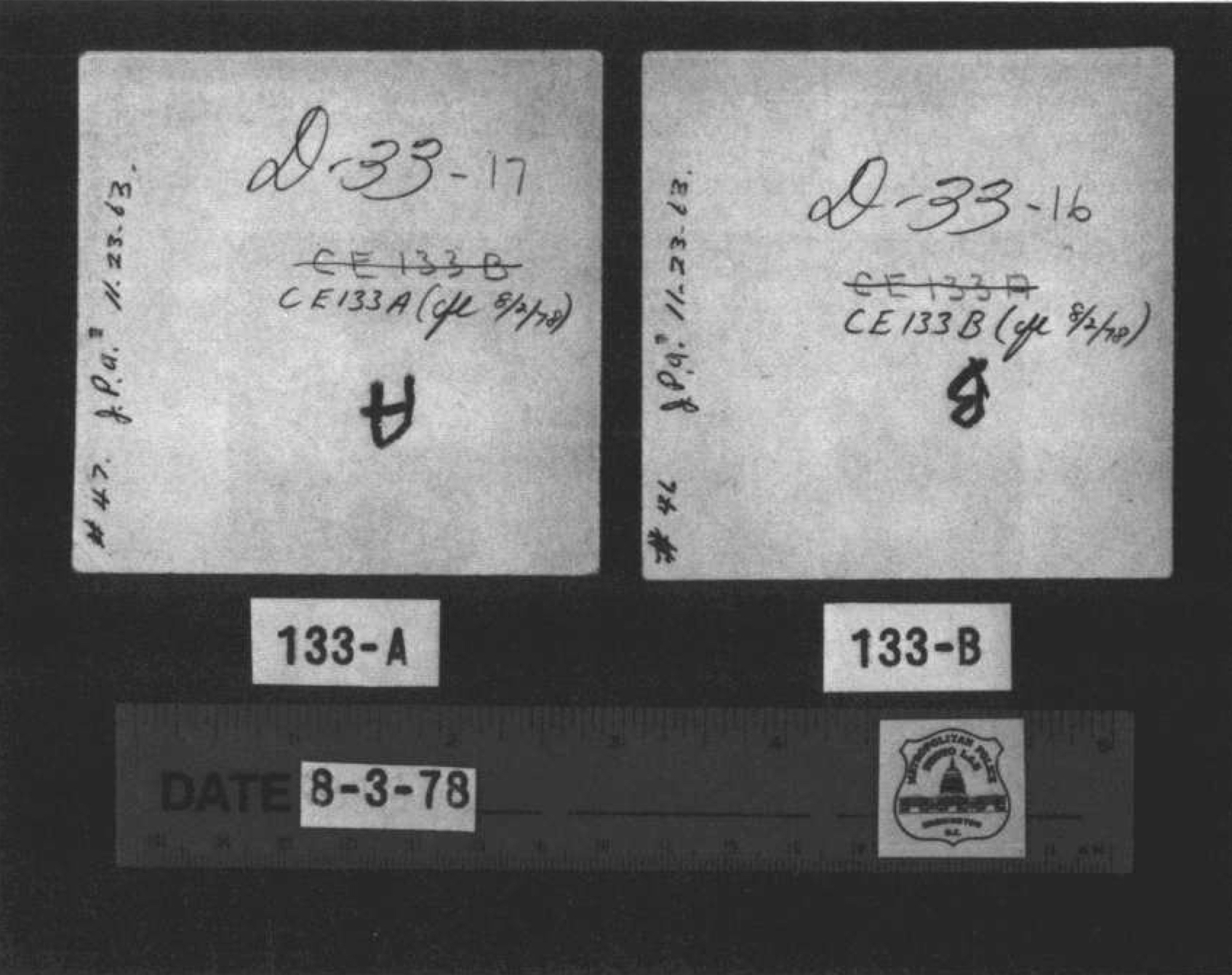 |
| Adamcik’s initials on the left side |
In June 1964, Special Agent Bookhout of the FBI met with Gus Rose to apparently re-establish where the backyard photos were discovered. “Rose identified same as being two photographs in a packet of forty-seven photographs found by him in a box during a search of the garage at the residence of Mrs Ruth Paine ... ” A few days later, Bookhout met with Detective Adamcik who “stated these are two photographs from a packet of forty-seven photographs found in the search ... Adamcik stated since he was present at the search he had numbered each photograph on the back and placed his initials thereon.” Adamcik’s initials appear on the back of the drugstore prints of both 133-A and 133-B, as do the numbers 46 and 47.
It is hard to reconcile Rose’s account of McCabe finding one of the prints with the alternate story that the prints were found inside a packet. It is possible that Rose had become aware that McCabe had supposedly found something in the garage, and so stated McCabe found one of the prints in a bid to be helpful (if ultimately confused).7
Oswald’s Photographs
The House Select Committee’s photographic panel sought to buttress the identification of the Imperial Reflex as “Oswald’s camera” by applying the unique signature test - the markings on the edges of the negatives exposed in that camera - to other photographs found amongst Oswald’s possessions. Panel leader Cecil Kirk authored the following paragraph:
“In regard to the allegation that this camera had been used only to take the incriminating backyard pictures of Lee Harvey Oswald, the panel examined all of the photographic material in the National Archives that was listed as having been taken from the effects of Lee and Marina Oswald ... Most of these were family-type snapshots, including scenes of an older child and baby in a crib, Marina Oswald playing with a child, and Lee Oswald holding an infant. The frame edge markings appearing on the negatives to these photographs and the camera scratch marks appearing directly on the pictures were studied and found to be entirely consistent with both the original test materials and the Oswald backyard pictures which were exposed in the Oswald Imperial Reflex camera.” (HSCA Report p. 161)
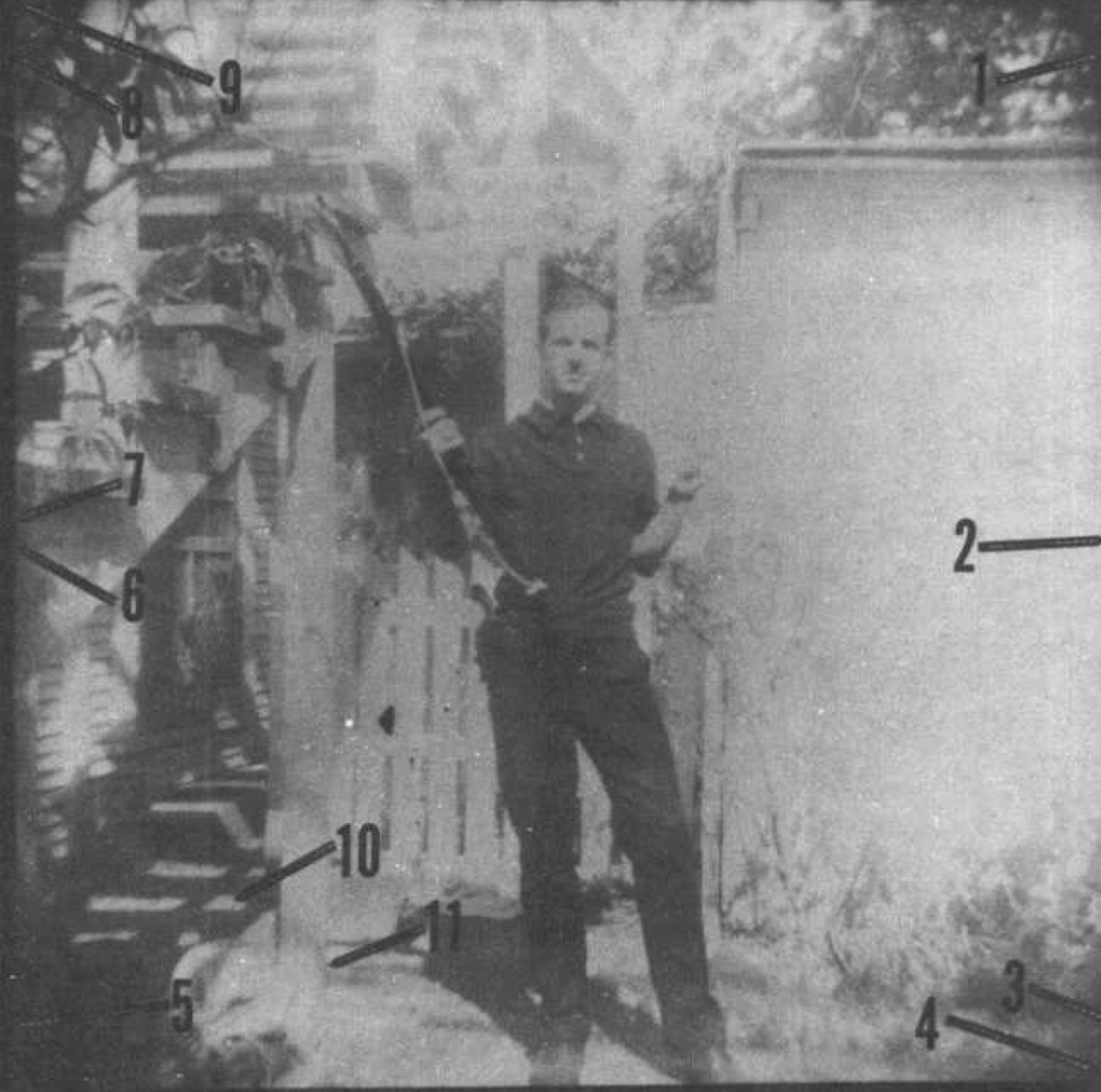 | 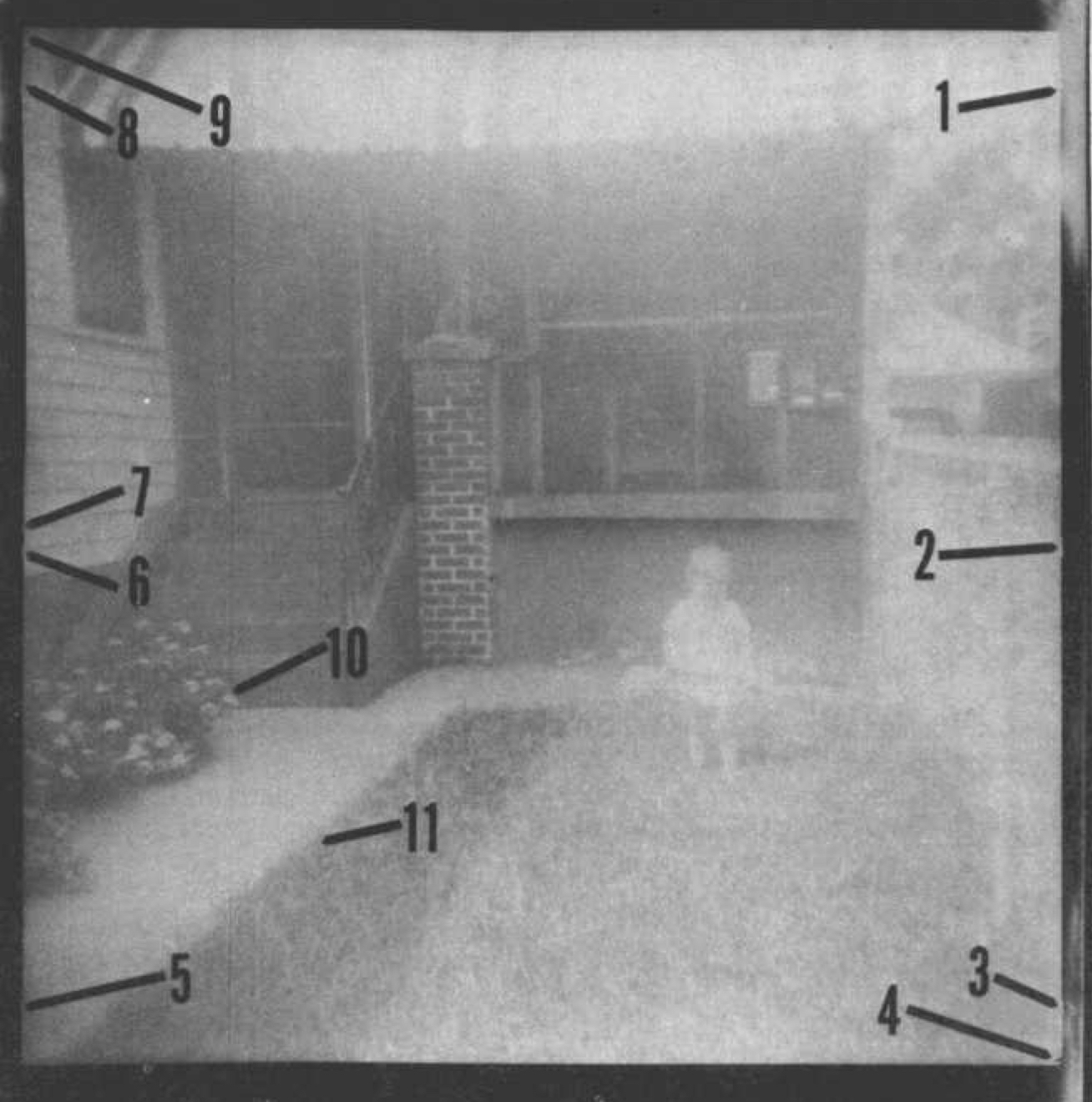 |
| Edge markings negative 133-B | Edge markings JFK Exhibit 189 |
 |
| “Lee Oswald holding child” |
Serving as an example of a photo “entirely consistent” with the Imperial Reflex is a photograph taken in New Orleans, JFK Exhibit F-189, in which Oswald’s young daughter June is pictured posing before the screened porch in the courtyard of the Magazine Street apartment. Numbered pointers show identified scratches or markings which appear to match the scratches and markings found on the backyard photos. This photograph is one of a New Orleans set, “family-type snapshots” which include photos that could be described as “Marina Oswald playing with a child” (and a set to which negatives were recovered). Of the other photographs specifically mentioned in the Kirk’s description of the Oswald photographs, the known snapshots of “Lee Oswald holding an infant” originate from Russia, while the “scenes of an older child and a baby in a crib” seem to refer to separate photos of either an older child or a baby in a crib which originate from Russia and later a few from Dallas and New Orleans. According to Robert Oswald, the Imperial Reflex (or whatever “American camera” Lee Oswald owned) stayed with him until Lee’s return to Fort Worth in 1962 and so could not have been used in Russia.
Cecil Kirk’s paragraph appears to have been carefully worded, such as a lawyer might do, to imply something without actually saying it. Here, the description of “family-type snapshots” is followed by an analysis of frame edge markings, implying that all of the specific snapshots referred to were “studied” and found to have the same markings as the Imperial Reflex. But Kirk is referring to the frame edge markings “on the negatives to these pictures”, and the New Orleans set represent the only “family-type snapshots” identified as having negatives at the Archives, where only about two dozen negatives were on file in the first place. In describing a “match”, Kirk is referring to one photograph/negative - JFK Exhibit F-189. “It is our opinion that the same camera produced the baby picture.”
Mr GOLDSMITH: What were the panel’s overall conclusions regarding the frame edge marks and camera scratch marks that it evaluated?
Sergeant KIRK: That it is a reliable source of identification and it is our opinion that the camera did indeed produce these photographs.
Mr GOLDSMITH: When you say these photographs, you are referring to the backyard pictures?
Sergeant KIRK: The backyard pictures and the baby picture. (HSCA Vol II p. 371)
The assertion in the HSCA report that “many” photos and negatives were linked to the Imperial Reflex camera is technically true, but appears to refer only to four photos and one photo group: the three backyard photos, one photo of General Walker’s house, and the multiple photos included in the New Orleans set.8
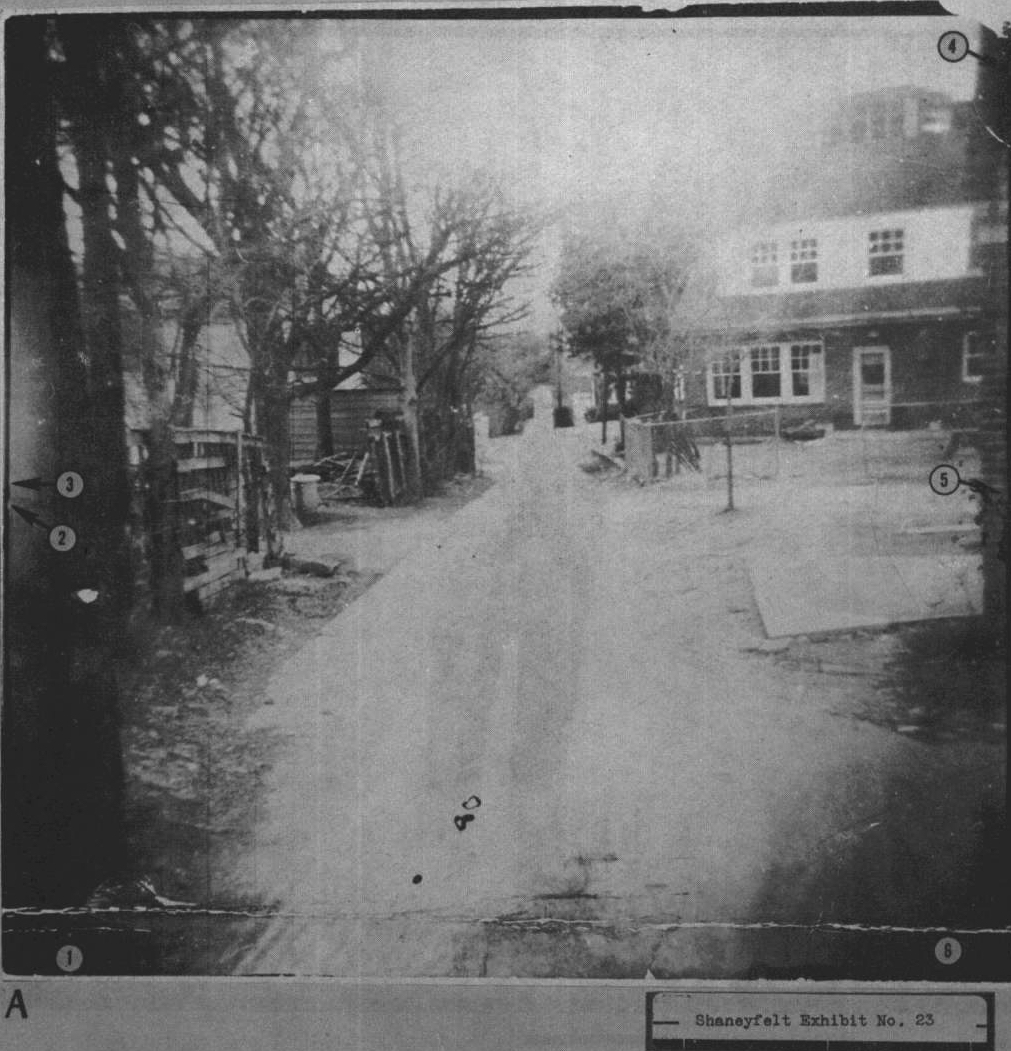 |
| Shaneyfelt Exhibit 23: “Walker” photo |
What of the photographs “listed as having been taken from the effects of Lee and Marina Oswald”? To say that “most” of these photos consisted of “family-type snapshots” is something of a stretch. Some of the family photos, for example, are scenes of Oswald’s mother or his brother Robert’s family, which had been forwarded to him while overseas. Others are of friends in Russia, or friends in the Marine Corps. Altogether, family-type snapshots - understood as photos of Lee Oswald and his immediate family (Marina and his children) - are relatively few and most of them date from the Soviet Union.
On December 3, 1963 FBI agents visited Marina Oswald with a group of forty-seven photographs for her identification. These pictures had been delivered to the FBI from Captain Fritz of the Dallas Police Department, and were described as “among the effects of LEE HARVEY OSWALD.” The two backyard photos are listed in this group as photos 46 and 47. (CE1401) This collection of photographs appear to be the contents of the “packet” in which the backyard photos were discovered, referred to by Rose and Adamcik in June 1964. The forty-seven photograph group is also mentioned in a report generated investigating the leak of 133-A in February 1964 (CE1788). The December 3 report lists photographs by number, accompanied by Marina Oswald’s description of their content. The majority of these photographs are from Russia. Three photos predate the Russian trip - one labeled Oswald in 1952; one of Oswald and John Pic, and one from Japan. The two backyard photos alone postdate the Russian trip.
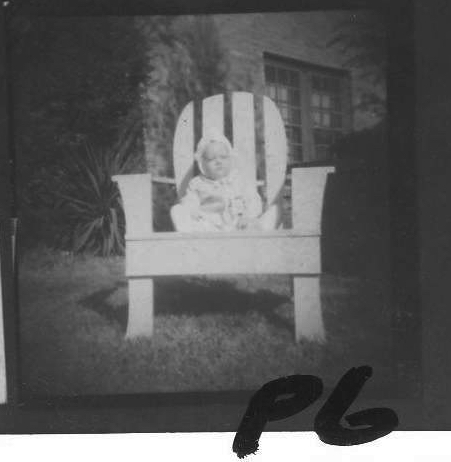 |
| June Oswald at Elsbeth St |
On January 31,1964 FBI agents visited Marina Oswald with a collection of over 350 images for her identification, mostly photographs but also some postcards (CD443). The photographs are numbered within groups, with some photos duplicated from the packet shown to Marina in December, but the backyard photos not among them. Only two photographs, both from Elsbeth Street, were of immediate Oswald family and dwelling in Dallas (Item 11 P4, Item 33 P6).
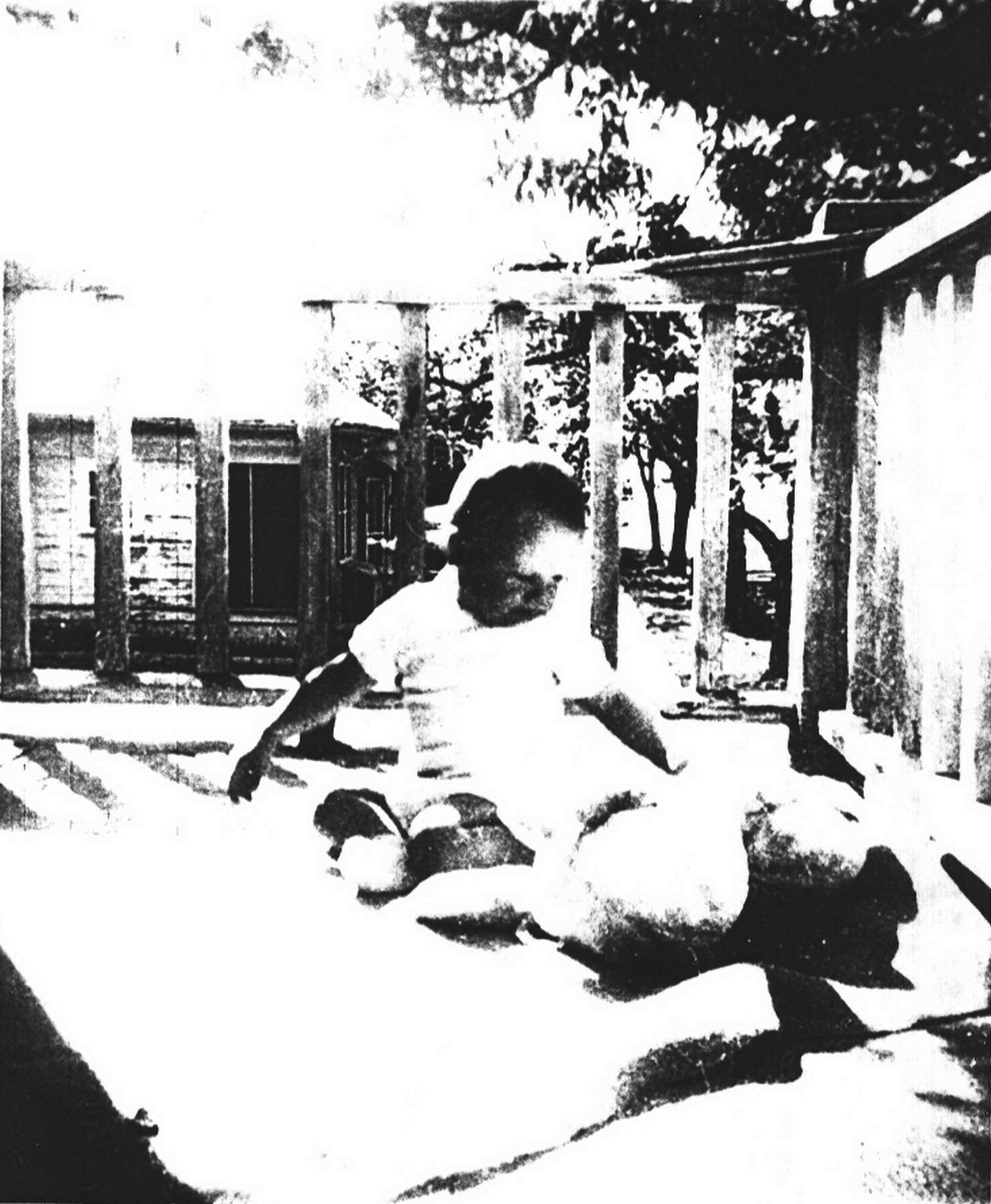 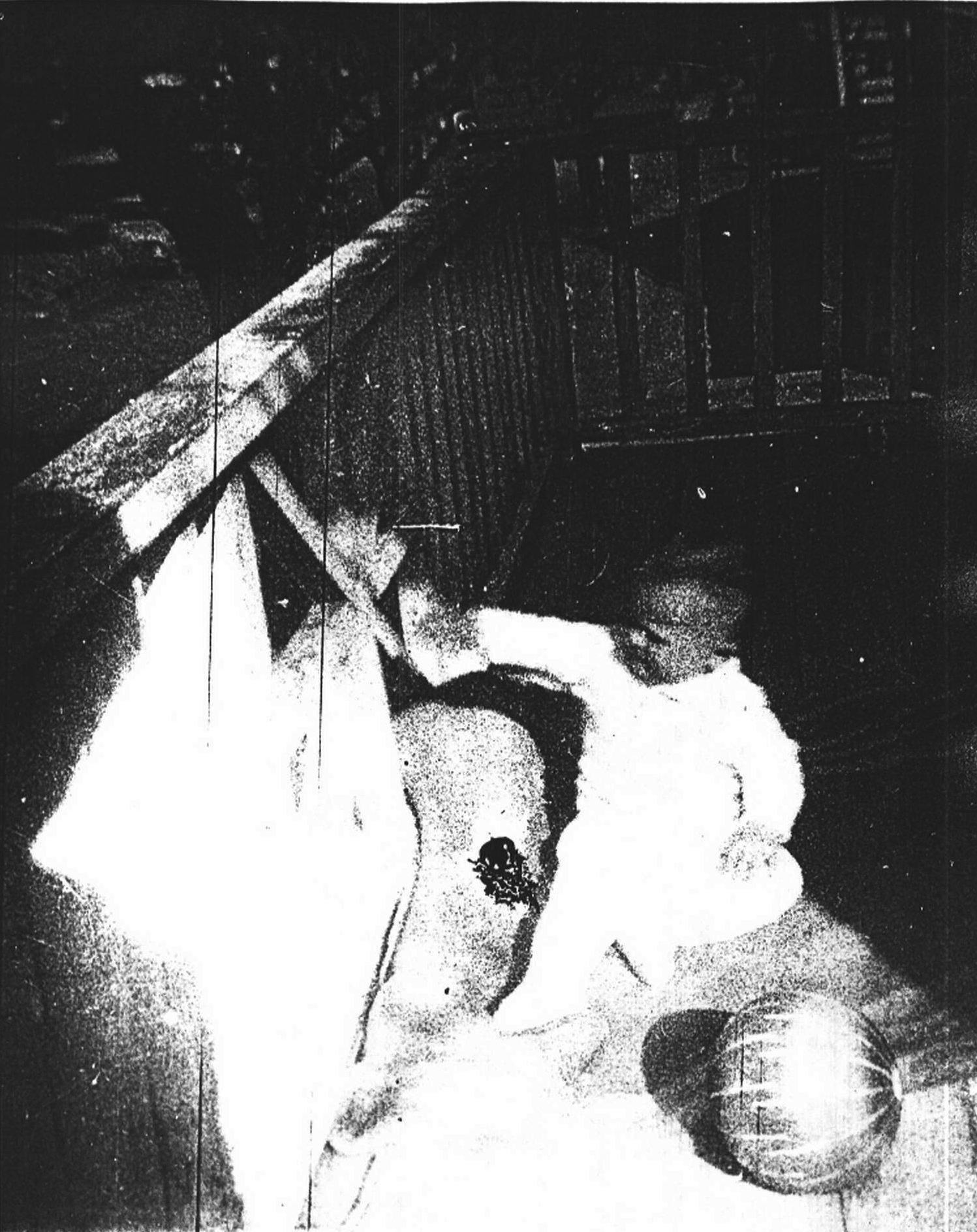 |
| June Oswald Neely St balcony |
On March 19, 1964 FBI agents again visited Marina Oswald to exhibit for her identification another group of photographs, 448 in total - of which about 300 were determined to belong to the Paines. A different filing system again is used to list and describe the photographs (CIA Oswald 201 file Volume 32). Of this group - approximately one hundred and fifty Oswald photos, with many duplications from the previous presentations - only six are linked to the first four months of 1963: one photo from Elsbeth Street (65-7), three of June Oswald at the Neely address (B3-13, B3-17, B3-29),and the two backyard photos (D33-16, D33-17).9
From the record, excluding the backyard photos, there appear to be only six Oswald family-type snapshots from the first months of 1963 and, from the record, very few others from Oswald’s entire stay in Dallas in 1962-63. Oswald was known to complain that he couldn’t find the proper film for his Russian camera, but he seems to have been adverse to using his “American camera” despite having a young child, the subject of most of the few photos which do exist.
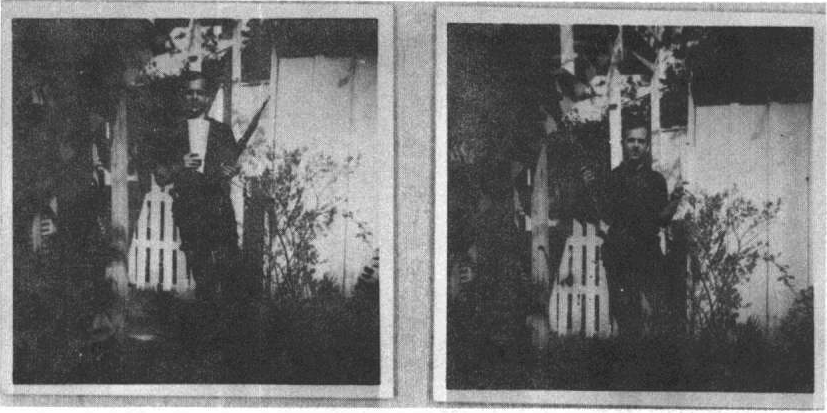 |
None of the photos in the record from this time period, including the photos of the Walker house attributed to Oswald, have the dimensions or borders of the backyard photos known as 133-A and 133-B. The “drugstore” finishing is unique to these photos.10 The automated machines of the era maneuvered an exposed roll of film to fix the negatives and then create the prints, so it is likely the backyard photos were originally processed using this method. Given the absence of any other photos from the period with a “drugstore” finish, did Oswald orchestrate the backyard photo shoot and then process a roll of film which contained only three exposures? Assuming the official narrative is correct and the photos were taken on the last day of March 1963, why wouldn’t Oswald develop the three negatives at Jaggars-Chiles-Stovall? Perhaps he felt the content of the photos might prove awkward, as he had earlier been told not to bring Russian literature to work after he was seen reading one of his subscription periodicals.11 This is assuming that Oswald was the person responsible for the processing of these photos. The two originally discovered backyard photos, as “drugstore” prints, are an anomaly amidst the Oswald photographs.
Did Lee Oswald Have A Working “American Camera” In Dallas?
Marina Oswald was asked about her late husband’s photographic habits during a Deposition for the HSCA:
Q. Did he like photography?
A. I don't think so. That is a very expensive hobby.
Q. To your knowledge ... did he own a camera?
A. I really don't remember.
Q. Did he own any kind of –
A. I remember in Russia, he took pictures. It was our camera or somebody's camera but I know he was taking pictures. I do believe it was our camera because he was carrying it with him.
Q. When you lived in Texas did he own a camera?
A. I don't recall but, according to some pictures we had he might have because he had some pictures that were taken recently, I mean during our living there. I do believe he probably had. (HSCA September 20, 1977)
This theme was picked up again some eleven months later:
Q. Did Lee photograph pictures of you and your daughters at any time?
A. In this country?
Q. Yes.
A. Yes; in Dallas once, on a balcony, he took a picture of my daughter.
Q. Any other times?
A. Possibly.
Q. Do you recall now any other times?
A. Well, we took a picture once at the bus station through this thing called the photomat where you put a quarter or a dime or whatever price in it and maybe Lee took pictures of me during our life together; yes.
Q. Do you have any memory of these specific pictures being taken?
A. No. (HSCA August 9, 1978)
Marina Oswald is not saying she witnessed Lee operating a camera while in Dallas, but offering an assumption, since she had seen photos of her daughter June filmed on the balcony at 214 Neely Street in March or April 1963, then Lee must have been responsible.12
Ruth Paine also was not sure a camera was available to Oswald in Dallas.
Mr. JENNER - Was there any picture taking during the period, during the fall of 1963, either in New Orleans or in Irving or in Dallas?
Mrs. PAINE - Not by either Lee or Marina that I heard of.
Mr. JENNER - And did you hear any conversation between them in your presence or with you with respect to his or they having a snapshot camera or other type of camera to take pictures?
Mrs. PAINE - No; the only reference to a camera was made by Lee when he held up and showed me a camera he had bought in the Soviet Union and said he couldn't buy film for it in this country. it was a different size.
Mr. JENNER - Did they ever exhibit any snapshots to you?
Mrs. PAINE - Yes; a few snapshots taken in Minsk.
Mr. JENNER - But no snapshots of any scenes in America that they had taken?
Mrs. PAINE - No.
Mr. JENNER - Or people?
Mrs. PAINE - No. (WC March 21, 1964)
The New Orleans Photo Set
In contrast to the sparse number of Oswald family-type snapshot originating from Dallas in early 1963, at 4905 Magazine Street in New Orleans a set of eleven photos are taken in the courtyard, probably within a relatively few minutes. Negatives from these photos were said to be found amongst Oswald’s possessions, and later used by the HSCA photography panel to identify a match to the Imperial Reflex camera.
There are a few occasions in the Oswald photographic collection when multiple pictures cover an event - Lee Oswald ironing baby clothes on a suitcase during the last days in Minsk, or the Oswalds at the train to begin the journey back to America13 – but eleven photos at a single location represents a burst of photographic enthusiasm not seen elsewhere.
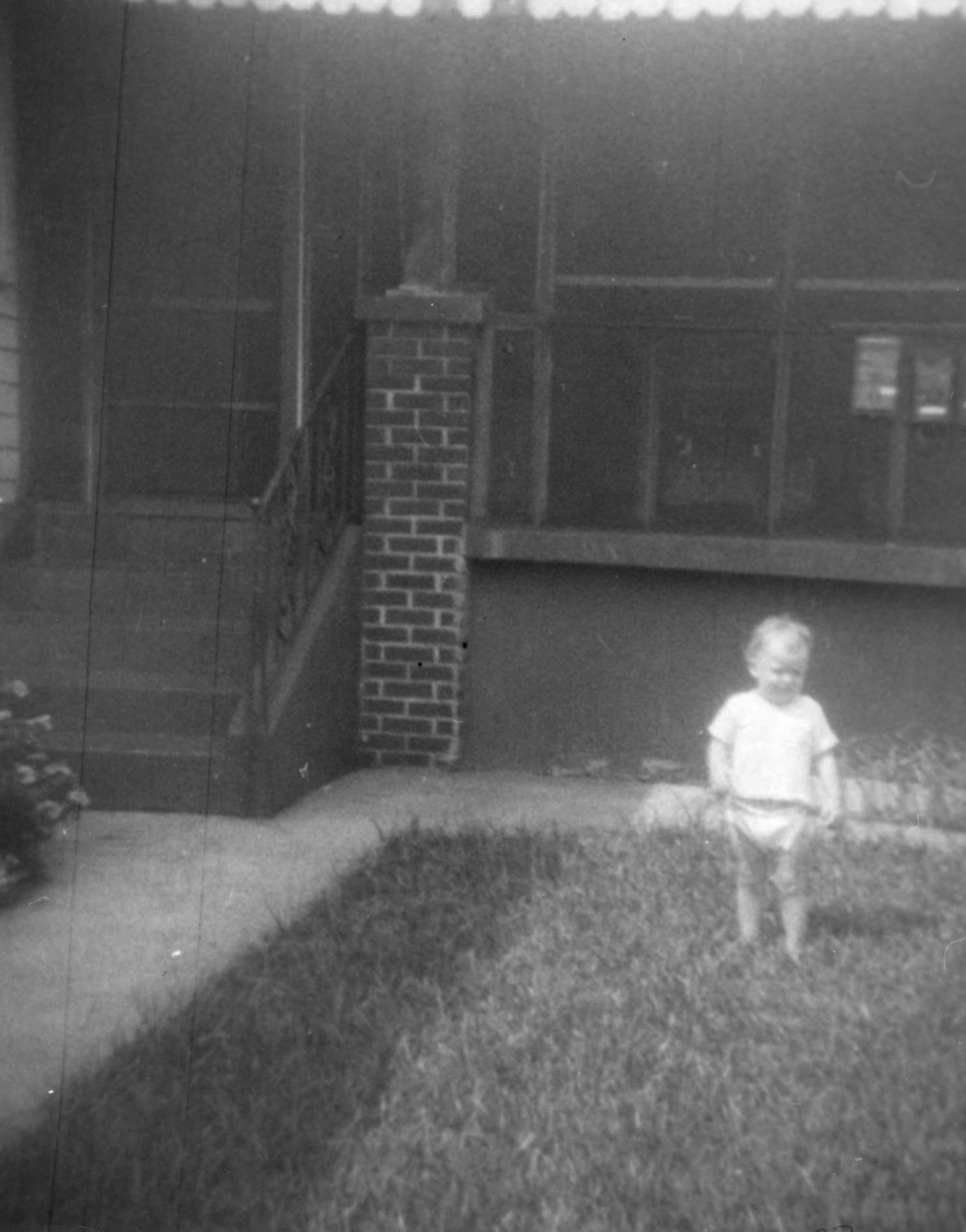 | 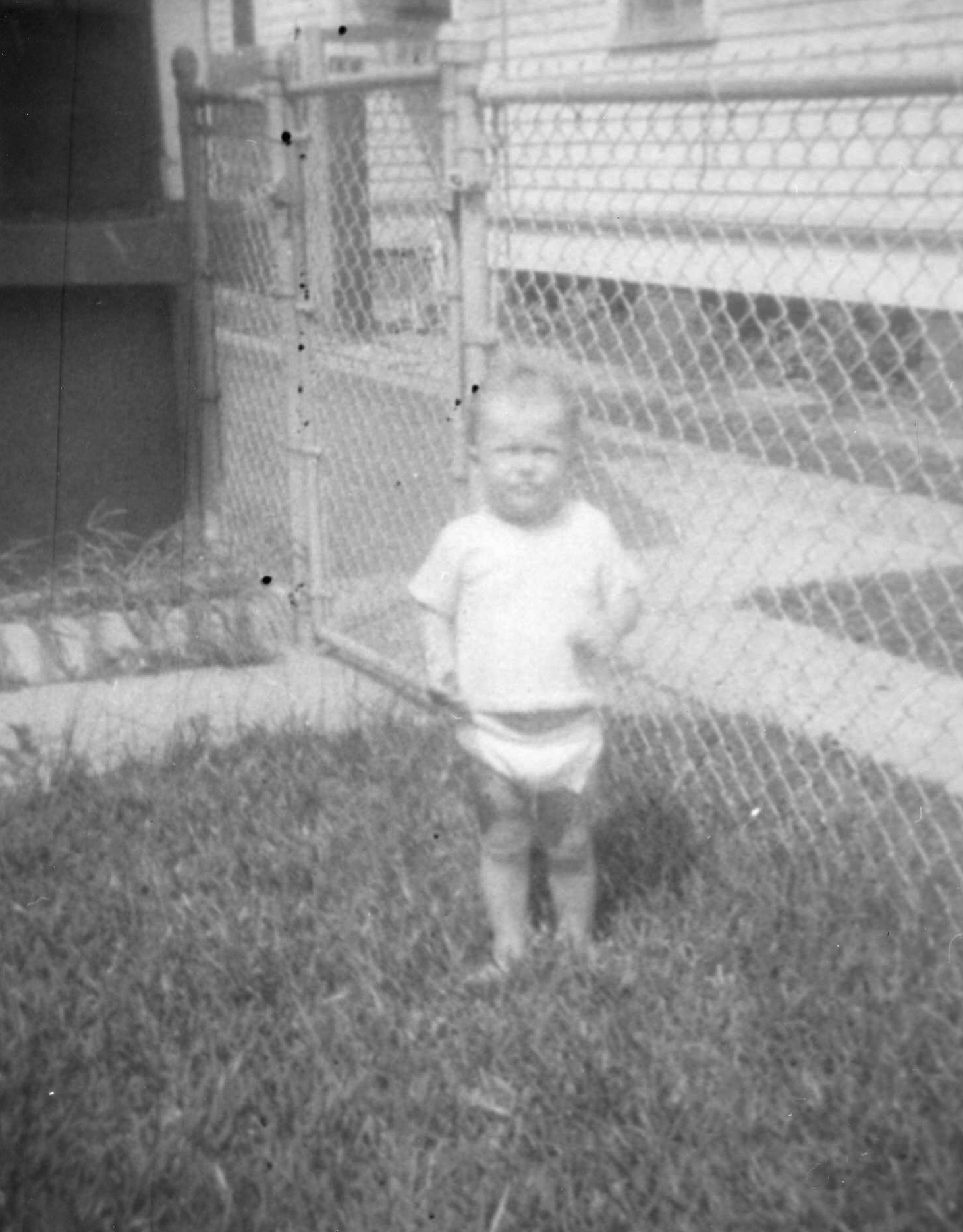 |
The New Orleans photo set is a domestic scene: toddler June Oswald poses before the Magazine Street apartment for two wider photos, then the photographer comes in closer near the gate and fence with a distinct driveway behind, then June joins Marina, who is barefoot and comfortable in black shirt and shorts.14 The lawn is wet with spray from a garden hose, which June picks up and aims about her. The mood is casual and happy. The photos are undated, but Marina’s visible pregnancy is consistent with early second trimester dating these photos to the first month in New Orleans, May-June 1963. This was a time, according to the available testimonies, of tension and disagreement for the Oswalds:
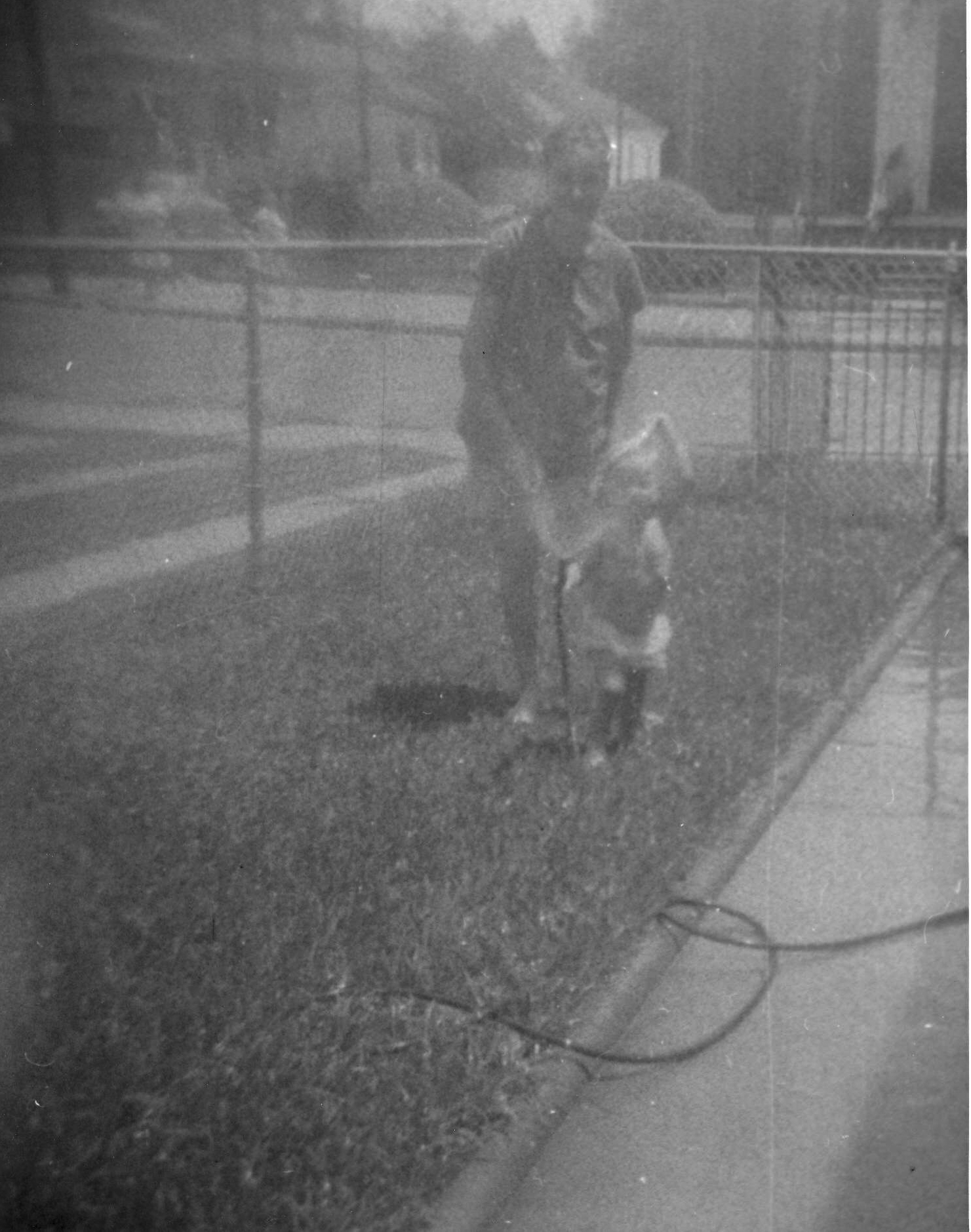 |
Mr. PREYER ... .just before he went to New Orleans, what was his treatment of you?
Mrs. PORTER. Well, he was quite brittle, sometime toward me.
Mr. PREYER. That was family quarreling?
Mrs. PORTER. Quite constantly. (HSCA September 13, 1978)
This state of affairs was evident to others. Ruth Paine: “when I took her to New Orleans in May, he was very discourteous to her, and they argued most of that weekend.” (WC March 18, 1964). Mrs Jesse Garner, the landlady at Magazine Street also witnessed tensions:
Mr. LIEBELER - Did you ever try to talk to Marina Oswald?
Mrs. GARNER - Yes; I did when she would be outside hanging clothes. I tried to talk to her and to the baby, I talked to both, and she would put her hands over her eyes and start crying. I asked her how she felt, and she would just do like this with her shoulders.
Mr. LIEBELER - She shrugged her shoulders?
Mrs. GARNER - Yes ... And another thing, she would nod, try to tell you hello when he wasn't there, but if he was there like they was sitting on the steps or something, or they would go through the drive and he was there, she wouldn't even look at you.
Mr. LIEBELER - She was more friendly and outgoing when Oswald wasn't there?
Mrs. GARNER - Yes; when he was there, she wouldn't have nothing to say.
If Lee Oswald did not suddenly find peace with his wife and take this unusual set of photos, who could have? There were very few known visitors at this address, and the casual nature of the photos strongly suggests the photographer was known and familiar to the subjects (Marina and June). The photo set was shown to Marina Oswald during an HSCA Deposition on August 9, 1978:
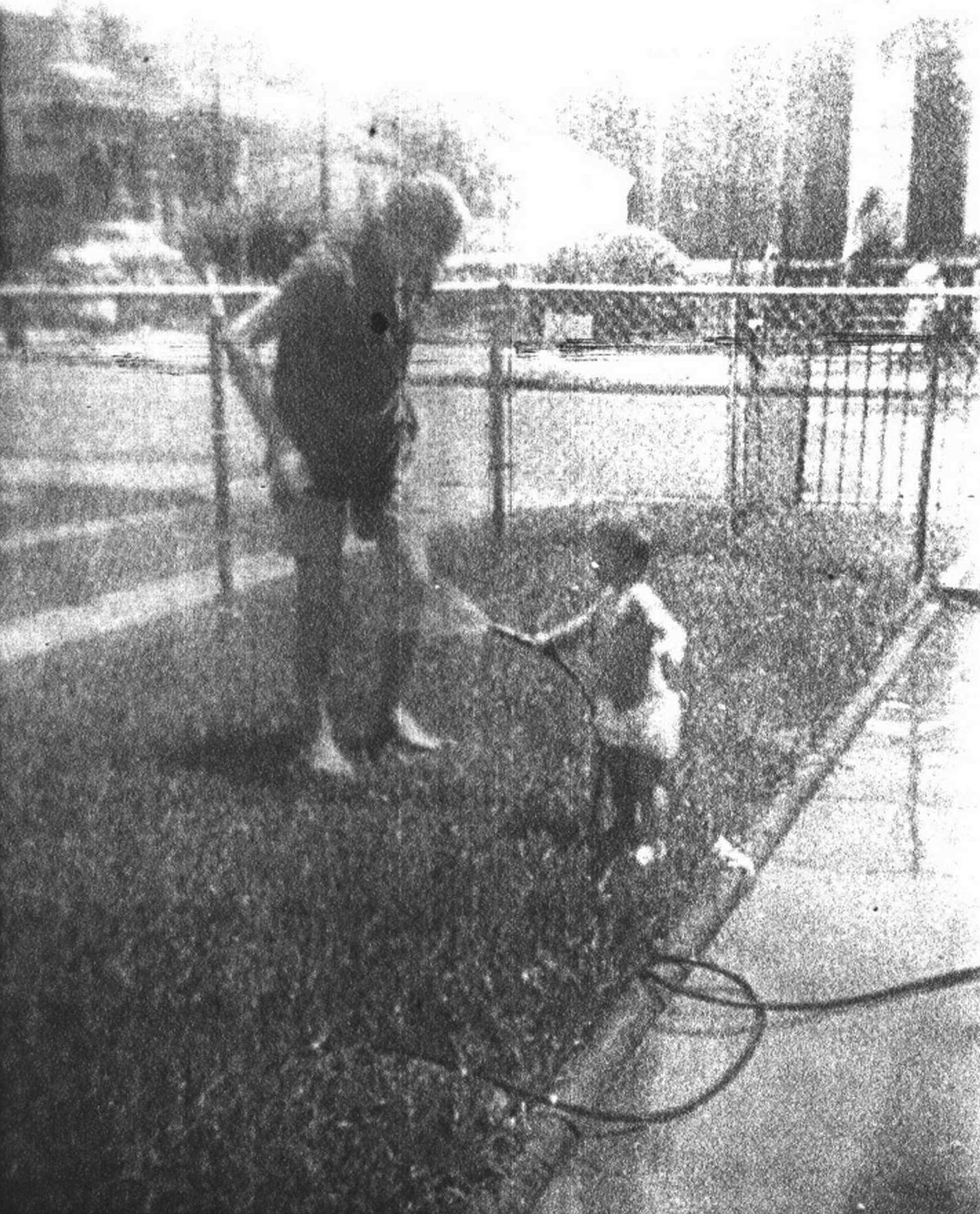 |
Q. I now would like to show you, Mrs. Porter, six photographs and see if you can identify these for us.
A. This is a picture of me and my daughter June when she was a child. I do not know where they were taken though ...
Q. Do you recall when this was taken?
A. No.
Q. Do you know if people took pictures of you apart from Lee?
A. Well, I don't recall the picture taking incident, period. I don't know who took the picture.
Q. Did Lee take pictures of you?
A. I don't know. I don't remember.
Q. You don't remember?
A. No; it could have been in New Orleans because I was expecting a baby then ...
Q. Mrs. Porter, do you remember the incident when these pictures were taken?
A. No.
There is one person who had been present at the Magazine Street apartment and was friendly with Marina, familiar to June, and who could be linked with the Imperial Reflex camera. That is Ruth Paine, who arrived in New Orleans with Marina Oswald on Saturday May 11, 1963, and stayed through Tuesday morning May 14. On Sunday, the Oswald and Paine families (Ruth Paine had her own two children along) toured the French Quarter. On Monday, Lee Oswald would have gone to his job at the Reilly Coffee Company, leaving Marina and Ruth Paine together at the Magazine Street apartment.
Ruth Paine would visit this apartment again for several days in September 1963. For the Warren Commission she could draw a sketch of the interior and exterior layout of 4905 Magazine Street (CE403). She referred to the courtyard area where the photos were taken several times in her testimony:
Mrs. PAINE - ... Lee showed her, of course, all the virtues of the apartment that he had rented. He was pleased that there was room enough, it was large enough that he could invite me to stay, and the children, to spend the night there. And he pointed out this little courtyard with grass, and fresh strawberries ready to pick, where June could play ... Marina was definitely not as pleased as he had hoped. I think he felt – he wanted to please her. This showed in him.
Mr. JENNER - Tell us what she said. What led you to that conclusion?
Mrs. PAINE - She said it is dark, and it is not very clean. She thought the courtyard was nice, a grass spot where June could play, fenced in.
Mrs. Garner, the landlady, remembered Ruth Paine’s visits from observing her station wagon parked out front. She did not see Paine personally, but told the Warren Commission that her husband did.
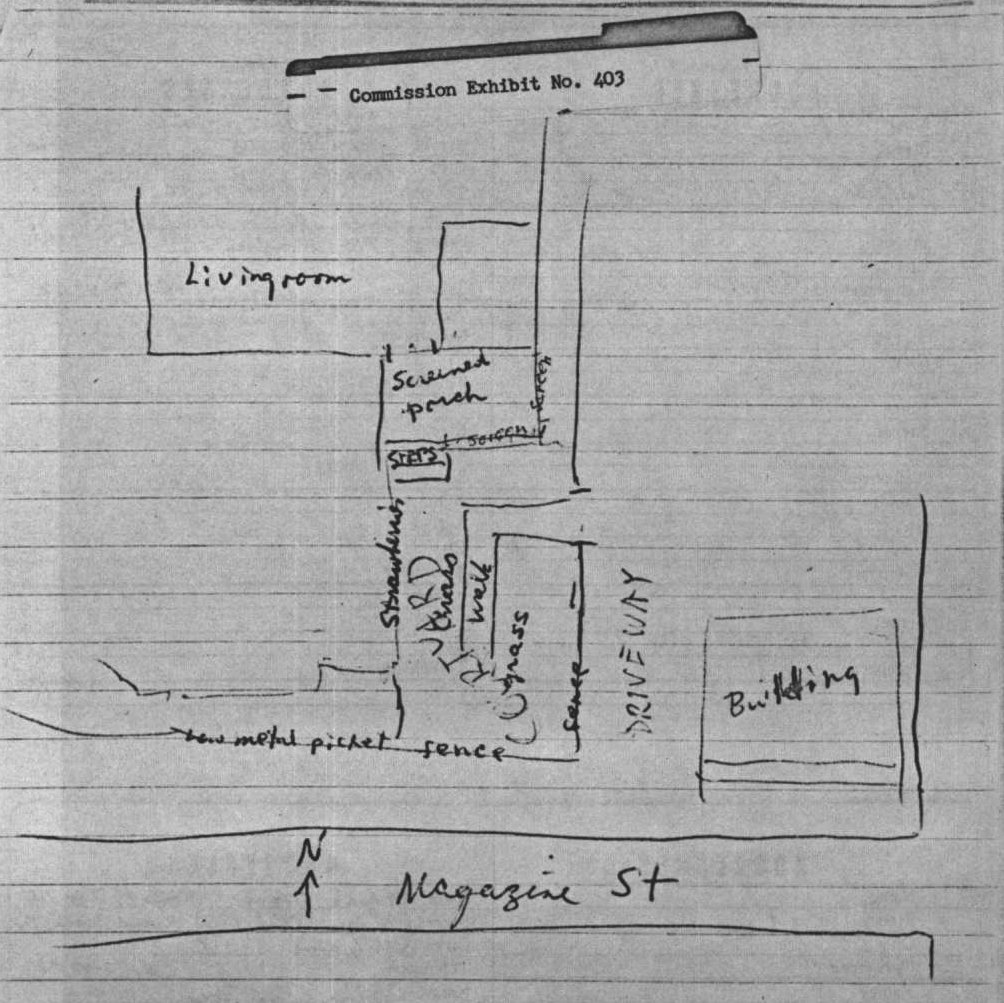 |
| Ruth Paine sketched the Magazine St layout for the Warren Commission |
Mr. LIEBELER - Did your husband see that person?
Mrs. GARNER - Yes; my husband.
Mr. LIEBELER - At this time.
Mrs. GARNER - Yes; my husband saw her and spoke to her. I never did see her.
Mr. LIEBELER - You say your husband had talked to her. Did he tell you what she had said?
Mrs. GARNER - No; I never asked him and he never said nothing. (WC April 6, 1964)
At the close of her testimony, Mrs Garner is addressed by Liebeler: “I do want to thank you for the patience that you and your husband have shown to me and for the cooperation you have given us in coming down here and testifying. On behalf of the Commission I want to thank you both very much.” If Mr Garner had testified and perhaps been asked the circumstance of his conversation with Ruth Paine it is not in the record. Despite his apparent presence during his wife’s appearance before Liebeler, there is no transcript of any interview with Jesse Garner from April 6, even as it would have been as relevant, if not more so, than what his wife could offer. Instead, a brief affidavit focused specifically and exclusively on his contacts with Lee Oswald is executed on May 3, 1964.
The New Orleans photo set is not listed among the group of photographs shown Marina Oswald on January 31, 1964. The photo set is listed and identified as among the group of photographs shown to Marina on March 20, a group which included many photographs belonging to the Paines.
If the Imperial Reflex camera was not Oswald’s - and the evidence assembled by the Warren Commission and the HSCA does little to install confidence in this assertion - its provenance can be located in circles close to Oswald, as seen with the backyard photos and the New Orleans set,15 and can be linked, directly or indirectly, with Ruth Paine.
Part 3: Did Marina take the Backyard Photos?
The narrative establishing the origin of the backyard photos is based largely on Marina Oswald’s recollection, but official investigators have often been skeptical of her stories. Her memory lapses tend to recur or intensify unpredictably, spiked by sudden detailed recollections of incidents which are often incredible or absurd (i.e. Lee Oswald’s attempt to assassinate Nixon or wandering busy Oak Cliff for target practice with the rifle jammed in a raincoat). There are moments in her testimonies and interviews where she appears dumb and largely unaware, other times when she is fairly lucid. If there is a pattern, at least in the months following the assassination, it’s the memory lapses and absurd stories occur most frequently over incidents which critics over the years have suspected never actually happened.16
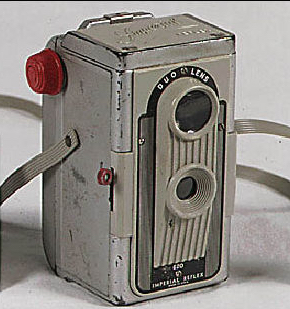 |
The problem accepting Marina’s fuzzy account of the creation of the backyard photos is partly a psychological one: how is it possible for her to be so vague about details when the event itself was so highly unusual and possibly indicative of a dark turn in her husband’s life? It was purportedly the first and only time she had ever operated a camera, but later she could barely recall the procedure. Supposedly her husband appeared before her wearing strange wardrobe and brandishing firearms which she had not been previously aware.17 Yet Marina tells the Warren Commission: “I didn’t attach any significance to it at the time.” (WC February 3, 1964) The backyard photo session was apparently never mentioned to Ruth Paine, even as tension in the Oswald’s marriage was a frequent topic of conversation during their burgeoning friendship. Marina’s handwritten narrative about her life with Lee, filled with anecdotal episodes from their marriage, does not mention the backyard photo-taking at all (CE993/994).18
The Warren Commission – through Commission lawyers Rankin and Liebeler – never questioned Marina Oswald with the intent of extracting details on the creation of the backyard photos, content to have her briefly recount her story of being interrupted by her husband while hanging diapers. The interviewers for the HSCA did a better job trying to tease specific information to help clarify the veracity of the story. These interviews occurred some fourteen to fifteen years after the fact so her already vague recollections are all the more challenged.
A. I do believe it was a weekend and he asked me to take a picture of him and I refused because I don't know how to take pictures. That is the only pictures I ever took in my whole life. So we argued over it and I thought the pose, or whatever he was wearing was just horrible, but he insisted that I just click, just push the button and I believe I did it twice and that was it ...
Q. And you recall testifying about these same two photographs when you testified to the Warren Commission?
A. Yes; I remember them asking if I ever took the pictures and I had completely forgotten because it was only once in my life and I didn't know who to take pictures. Yes, when they showed me that, yes, I did take the pictures ...
Q. What did he tell you to do with the camera as far as taking the pictures?
A. He just told me which button to push and I did.
Q. Did you hold it up to your eye and look through the viewer to take the picture?
A. Yes. ... (HSCA Deposition September 20, 1977)
The interviewer is well aware the Imperial Reflex camera said to have taken the pictures featured a viewer at the top of the camera that one looks down into, and that the camera is held mid-body rather than raised to the eye. He is also aware that the shutter is opened by pushing down on a small lever, a different mechanical activity than simply pushing a button. Marina Oswald’s recollections cast doubt on her story, as the operation of the Imperial Reflex is so different than most consumer cameras that it should not be easily forgotten.
Marina Oswald did, once, describe accurately the camera’s mechanics, as accounted in an FBI summary from February 18, 1964, when agents were keenly focused on locating the backyard camera and a week after Marina temporarily stayed with Robert Oswald in the house where the camera would be later be “found”. The summary ascribed to her, compared with her other statements on the topic, is absurdly detailed and contains information never repeated: “She said the American camera had a greyish color, somewhat like aluminum. It was a box-type camera ... She can recall that she sighted the camera by looking down into the viewer at the top of the camera ... ” (CE 1404)
Q. When you took the first picture you held it up to your eye?
A. Yes; that is what I recall.
Q. What did you do next?
A. I believe he did something with it and told me to push it again.
Q. The first time you pushed it down to take the picture?
A. Yes.
Q. And the first time, what happened before you took the second picture?
A. He changed his pose.
Q. What I am getting at is, did you give the camera to him so he would move the film forward or did you do that?
A. He did that.
Q. So you took the picture and handed the camera to him?
A. Yes.
Q. What did he do?
A. He said, "Once again," and I did it again.
Q. So he gave you back the camera?
A. For the second time; yes.
Q. Did he put the rifle down?
A. You see, that is the way I remember it.
Q. Did he put the rifle down on the ground between ––
A. I don't remember. (HSCA Deposition September 20, 1977)
Marina Oswald is being asked whether her husband freed his hands by placing the rifle to ground, to support a developing hypothesis of the photo shoot. The HSCA photographic panel would surmise that the three photos were taken in a particular order, and that Lee’s need to move the film forward in the camera and otherwise instruct his wife resulted in the rifle and literature appearing in one set of hands, then the other, and then again as the first. Observing the photos in this presumed order (133-C followed by B followed by A) allowed the panel to state the “photographic technique improved appreciably during the sequence”, implying that the learning curve of the novice Marina Oswald was this way visible.19
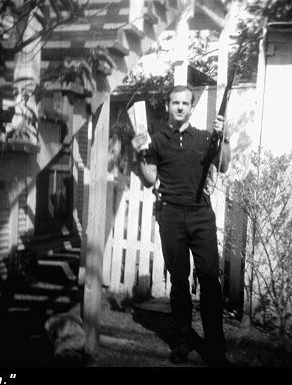 | 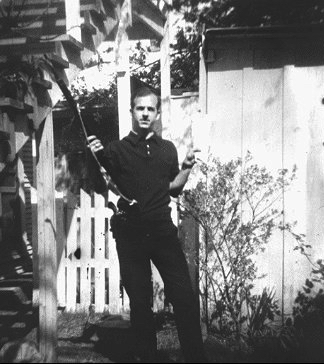 | 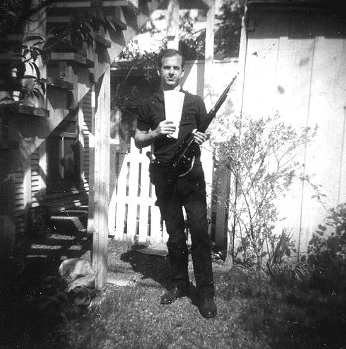 |
The Peter Gregory Interview
Peter Gregory was a member of the Dallas area White Russian community and one of the first persons to meet with Lee Oswald on his return from the Soviet Union in June 1962. Gregory, a consultant in the oil industry, taught Russian part-time in Fort Worth. Oswald sought a reference for his language skills. Gregory’s son Paul befriended both Lee and Marina, and the Oswalds were gradually introduced to a wider community of Russian speaking persons over the course of social visits into the autumn of 1962. In the aftermath of the assassination, Gregory was enlisted to provide translation services as Marina Oswald appeared before investigators.20
Peter Dale Scott, in his book Deep Politics And the Death of JFK, discusses the Russian language interpreters recruited for initial interviews with Marina Oswald. The first, Ilya Mamantov, was recruited by Army Intelligence officer Jack Crichton five hours after the assassination. Peter Gregory was brought in the following day.21 Scott notes that both men, as interpreters, had occasion to add words, or otherwise misrepresent what Marina was actually saying, as deliberately adding adjectives “dark” and “scopeless” to her vague descriptions of a rifle. (WCD 344 p22-23)
On November 27, 1963 Secret Service agent Leon Gopadze, Russian speaking and newly assigned to the Dallas investigation from Washington, joined the FBI’s Hosty and Brown to interview a tired and uncooperative Marina Oswald at the Six Flags Inn. During the interview, Marina was informed, through Gopadze, “the Government needs her cooperation and this might help her” remain in the United States. She was “asked how she intended to make a living ... She was then told that her cooperation with the Government could also be of assistance.” (CE1791)
The following day, Gopadze solicited assistance from Peter Gregory, whose presence he felt would be “beneficial” to enabling a more cooperative attitude from Marina Oswald. Gopadze had reviewed Gregory’s interpretive work recorded during interviews with her on November 23 (WCD 344). Gopadze’s review noted that Gregory had added words and rephrased certain statements, but his interpretive work was characterized as flawless in a later report (CE1792). Gopadze and Gregory met at the Six Flags Inn, discussed “mutual personal background,” and then Gregory described his introduction to Lee Oswald and subsequent interaction with the Oswalds. Gregory was characterized by Gopadze as “very patriotic, and loyal to this country.”
Immediately following this briefing, Gregory conducted what was described as a private interview with Marina Oswald. According to the summary, this interview was largely concerned with reviewing biographical information already on the record. Gopadze determines that Marina “was very sincere in her statements and that she was furnishing the information voluntarily without trying to hold anything back.”22 Gopadze then joins Gregory and Marina Oswald as the interview continues, possibly on Gopadze’s initiative, covering Lee Oswald’s frugality, his membership in a hunter’s club in Russia, and then a perhaps pointed question about an “Inter Club” in Leningrad.23 She is asked about Lee’s purported trips to Washington and Mexico (answering in the negative) and then was asked “whether she or Lee had any cameras.” Marina replies there was a Russian camera and an American camera: “one was a small camera and the other was a box camera”. This is one of two occasions, with the absurd February 18, 1964 summary from the FBI, that the descriptive term “box camera” was used by Marina Oswald.
According to the summary of this November 28 meeting, after a few more questions Marina became “very much concerned that Mr Gregory and I had any doubts as to her sincerity and truthfulness ... ’I hope you believe me, as I swear by God, this is the truth’.” Moments later, a measure of Marina Oswald’s willingness to be cooperative and truthful was revealed:
“Before showing Marina Oswald photographs of Lee Oswald holding the rifle, she was forewarned to tell me the truth about the photographs. She replied she would. At this time two photographs of Lee holding the rifle, a newspaper, and a revolver strapped at his side were shown to her and by seeing them it seemed somewhat of a shock to her. She started crying, but after composing herself, she said that the pictures were taken while they were living in the duplex on Neely Street at Dallas, Texas, as she recognized the background of the picture. She was then asked who took the picture. Marina hesitatingly said she didn’t think she knew but immediately stated that there was no use telling a lie, and added that it was taken by her upon Lee’s request, even though she did not know how to operate the camera. The operation of the camera was explained to her by Lee who also measured the distance where she should stand when taking the photographs. After Marina Oswald examined the pictures it was pointed out to her Lee was holding a rifle containing the scope and she said honestly that she does not remember noticing the scope but that it was Lee’s rifle and the same one she had previously seen in their apartment in New Orleans. The fact that Lee had a revolver in a holster on his right side was pointed out to her but she said she did not notice the revolver while taking the picture as Lee was dressed in black and it would be hard to see. She said the reason Lee asked her to take the photographs was for the purpose of sending photographs to the Militant magazine to show that he was ready for anything ... ” (CE1792)
This is the first recitation of the backyard photo story and Marina Oswald is strangely detached from the images, recognizing “the background of the picture” rather than her supposed personal involvement in the photo’s creation, and having to examine the pictures while things she didn’t know are pointed out to her. She claims to recognize the rifle, but as one “previously seen in their apartment in New Orleans.” Marina was consistent during her post-assassination interviews that she had first seen a rifle associated with her husband in New Orleans, and here maintains that position even as she is viewing a picture featuring a rifle taken previous to traveling there.24
This begins the phenomenon of Marina Oswald’s recovered memories, later to illuminate the Walker shooting, Lee and the rifle, the trip to Mexico City and so on. They begin shortly after the private interview with Peter Gregory, and one day after the subtle threat to “cooperate” with the government and its representatives. The appearance of the descriptive term “box camera” shortly before the first telling of the backyard story suggests the private Gregory interview may have been less concerned with retelling already known biographical detail, and more concerned with laying out terms of cooperation. If “box camera” was introduced to Marina from an outside source, how this descriptive information was known many weeks ahead of the camera’s later discovery raises serious questions.25
The Destroyed Photo of Oswald with a Rifle
Two days later, on November 30, 1963, Marina Oswald tells Secret Service Special Agent Gopadze “when she was shown, by the reporting agent, pictures of Lee Oswald holding a rifle she did not advise at that time that she had the same pictures but in smaller sizes pasted in her family album but that upon the suggestion of Mrs. Marguerite Oswald she destroyed them upon learning that her husband was a prime suspect in the shooting of the President.” (CE1787) This seems to confirm that a photo of Oswald holding a rifle was in Marina’s possession on the evening of the assassination and was destroyed either that night or the following day.26 It also seems to confirm that Marina began to identify or confuse, correctly or incorrectly, the destroyed photo with the backyard photos.
In testimony before the Warren Commission, Marina displays her confusion:
Mrs. OSWALD. ... I had even forgotten that I had taken two photographs. I thought there was only one. I thought that there were two identical pictures, but they turned out to be two different poses. (WC, February 3, 1964)
What is she referring to? The source of her confusion may be knowledge she handled one photograph of her husband, with a rifle, on the evening of the assassination, and later was advised she took two backyard photos (actually it would have been three, the fact of which demonstrates that the “two photograph” event was a construct created by her interviewers).
The most often told destroyed photo story features one photograph. Marina Oswald secured the photo from her personal effects after she had returned, along with mother-in-law Marguerite Oswald, to Ruth Paine’s house from Dallas Police headquarters the evening of the assassination. In the photo, Oswald is seen holding a rifle. Apparently there was an inscription, on the front or back, which said in English: “To my daughter, June”.27 Marina, fearful that the photograph be considered incriminating, showed it to Marguerite, who recommended she destroy it. The photo was apparently destroyed at either Ruth Paine’s home that evening, or at the Executive Inn the following day. It was burned in an ashtray, or ripped into pieces and flushed down the commode, or a combination of the two.
Marguerite Oswald told the Warren Commission that in the photo Oswald was holding the rifle above his head with both hands. If this was a backyard photo then it would represent a unique pose and therefore be a fourth photo, with Oswald posing this time without the literature.
Mrs. OSWALD ... And she came out with a picture a picture of Lee, with a gun. It said, "To my daughter June"-written in English ... I say to my daughter ... anybody can own a rifle, to go hunting. You yourself probably have a rifle ... I think my son is all agent all the time no one is going to be foolish enough if they mean to assassinate the President, or even murder someone to take a picture of themselves with that rifle, and leave that there for evidence. (Marguerite Oswald, WC testimony, February 10, 1964)
Sylvia Meagher speculated back in 1967 that the destroyed photo could have originated from Oswald’s time in Minsk, associated with his membership in a hunting club. Marguerite Oswald’s Warren Commission testimony could support this as she is shown the two backyard photos (Commission Exhibits 133-A , 133-B, and the blowup 134):
Mr. RANKIN ... I will show you some photographs. Maybe you can tell me whether they are the ones that you are referring to. Here is Commission's Exhibit 134.
Mrs. OSWALD. No, sir, that is not the picture.
Mr. RANKIN. And 133, consists of two different pictures.
Mrs. OSWALD. No, sir, that is not the picture. He was holding the rifle and it said, "To my daughter, June, with love." He was holding the rifle up.
Mr. RANKIN. By holding it up, you mean ––
Mrs. OSWALD. Like this.
Mr. RANKIN. Crosswise, with both hands on the rifle?
Mrs. OSWALD. With both hands on the rifle.
Mr. RANKIN. Above his head?
Mrs. OSWALD. That is right.
Mr. RANKIN. Did you ever see these pictures, Exhibits 133 and 134?
Mrs. OSWALD. No, sir, I have never seen those pictures.
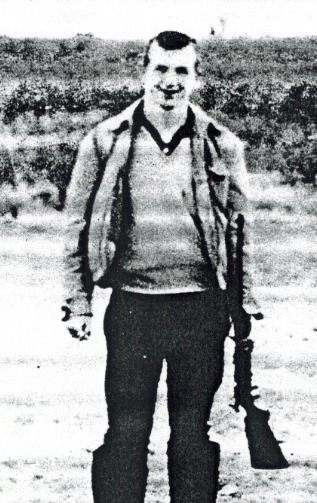 |
This appearance before the Commission occurred before the Life Magazine cover flooded the newsstands or her answer should have been more precise, such as a picture like or unlike the one on the cover of Life (as other witnesses referred to specifically). The backyard photos are distinct for Oswald’s clothing and the location, so Marguerite Oswald’s reply “I have never seen those pictures” implies that whatever the destroyed picture was, it was not a backyard photo.
Marguerite’s observation “anybody can own a rifle, to go hunting” may also be indicative of another origin for the destroyed photo. There is one known photograph of Lee Oswald with a rifle, apparently taken during leave from the Marines in 1958, which was in the possession of his brother Robert. Some of Robert’s photographs had been forwarded to Lee while he was in the Soviet Union. Did Marina have a copy of this photo misremembered by Marguerite, or an alternate of this photo in which the rifle was held above his head?
Regardless, Marina Oswald’s initial response to the backyard photos does not indicate she was responsible or even that she had seen them previously.
Notes
1 501 Elm Street is the Dal-Tex Building. Since the two photos and their corresponding negatives were said to be found inside a “packet”, perhaps that packet had an identifier listing this address. Did the Dal-Tex building have a tenant in 1963 which could process photos in the fashion associated with the originally discovered backyard photos?
2 The original negative of 133-A went missing while in the possession of the Dallas Police department. It would later be claimed (i.e. First Day Evidence) that only one negative was found at the Paine residence, and that the copies disseminated by the Dallas Police were generated from the two prints, not the negative(s). However, it is hard to get around the clear ID of two negatives made by the officers who found these photos, and the Identification Bureau paperwork from 4:30 PM which unambiguously records two negatives.
3 Shaneyfelt, the FBI man charged with investigating the photographs, did not actually make a positive identification between the rifle seen in the photographs and the rifle in evidence. He said it had “the same general configuration” and that “all appearances were the same”, and he noted that a notch or groove in the stock which “appears very faintly in the photograph” perhaps matched a similar notch found on the rifle in evidence, but it was not enough to make a “positive identification to the exclusion of all other rifles of the same general configuration.” The Warren Commission was responsible for claiming the positive identification, using deductive reasoning based on the timing of the receipt of the mail order firearms and the receipt of the two newspapers seen in the photographs.
4 Marina used the phrase “ha! ha!” in a handwritten narrative included in the Warren Commission’s exhibits (CE993) The handwriting and punctuation does not appear similar to that of the inscription on the back of the photo:
  |
Did Marina have a habit of using the exclamatory phrase “Ha! ha!”? She maintained of the inscription: “it would sound like me.” Who would have known that? For the Warren Commission, Ruth Paine would describe her Russian language skills: “My writing would be with fewer mistakes, because I can think about it more in putting it down, but still very many mistakes occur in it.” (WC March 18, 1964) Author Gus Russo, in his book Live By The Sword, speculated that the phrase was actually written by Jeanne de Mohrenschildt, but this photo was not known to her until its discovery in 1967.
5 Dennis Orfstein worked with Oswald at J-C-S and told the Warren Commission that Oswald had enquired about creating enlargements from his personal negatives and he showed Oswald the steps involved. Orfstein said that employees would use the J-C-S equipment for small personal jobs from time to time. According to Orfstein, Oswald initially created an enlargement of a landscape photograph from Minsk. There has long been speculation that Oswald used the J-C-S facilities to create not just the de Mohrenschildt print, but several identification cards and perhaps more backyard prints. This may be so, but Orfstein described the photography work space at J-C-S as a common area, so any work Oswald may have done would have been either in the presence of other workers or risking interruption by other workers.
6 This process, where little or zero knowledge or remembrance of an event on the part of Marina Oswald, gradually expands to extensive and detailed knowledge, often buttressed by newly discovered evidence, recurs during the investigation over topics such as the rifle, Oswald’s alleged attempt on Walker, and Oswald’s alleged visit to Mexico City.
7 If this should seem an outlandish proposition, then it is best to point out that both Rose and Stovall described finding a photo of General Walker’s house (CE5), amongst Oswald’s possessions, with the license plate already removed or blacked out from the parked car. Rose “stated he definitely recalls that this photograph, marked as Commission Exhibit 5, was one of the photographs recovered from the PAINE residence and that it had been mutilated at the time they had recovered the box containing the photographs.“ (CE1351) This cannot be true, as an evidence photo published in Jesse Curry’s memoir showed the Walker photo with the licence plate still intact. Gus Rose would later appear in an unfavourable light in Errol Morris’ film “The Thin Blue Line”.
8 The HSCA panel did not examine the photographs of the Walker residence found amongst Oswald’s effects, but previously, for the Warren Commission, the FBI’s Shaneyfelt had identified markings on one of these photographs as matching the Imperial Reflex. (WR p. 596) There has been a tendency to claim all the Walker photos were linked to the Imperial Reflex, but it was only the one, which had been printed with the image edge of the negative visible. Since the story of Oswald’s ‘American camera” was that he had it in Japan, left it with brother Robert while in Russia, and then retrieved it, the HSCA should have examined the photos from the Marines/Japan looking for these same consistencies, but there is no indication they did.
9 The Neely Street balcony photos of June Oswald appear to have been taken on two separate occasions, as her garment is long-sleeved for two photos and short sleeved in the other. According to Marina, the blanket laid out on the balcony floor on which June sits would later serve as the blanket which allegedly wrapped the rifle as it sat in the Paine’s garage.
10 There should be a “drugstore” print of 133-C as well, which has never come to light.
11 The automated commercial printers would produce the prints with no one needing to closely handle or see them.
12 During her testimony before the Warren Commission on February 4, 1964 Marina is asked to describe Lee’s performance as a father. She replies: “He would walk with June, play with her, feed her, change diapers, take photographs everything that fathers generally do.” Four days previous she had been shown a photo collection by the FBI which included the Neely Street balcony photos.
13 Neither of these photo groups were actually photographed by Lee Oswald, as he often appears in the photos. Many of the Russian photos in Oswald’s collection feature him as a subject, so these photos were either passed on to him or were taken by someone else using his camera.
14 Marina may be wearing a pair of “maternity shorts” as mentioned by Ruth Paine: “When she was with me in the spring, late April to the 9th of May, she had some money from Lee for her own expenses, and she used a portion of this, I would think a rather large portion, buying a pair of maternity shorts ... I know they cost nearly $5, and this was quite a large expenditure and quite a thrill. These were bought in Irving.” (WC March 21, 1964) Soon after her return to Irving from New Orleans, Marina wrote to Ruth and referred to her domestic situation with “The love is gone!”
15 This holds even if the backyard photos are conclusively determined to be forgeries, since the signature of the Imperial Reflex camera establishes it as part of the counterfeiting.
16 Marina’s memory problems are not consistent. For context, consider her response during Warren Commission testimony dated July 24, 1964 as she is shown the photograph of the Walker house (CE5) in which the licence plate of a vehicle had been removed: “I think when the Commission showed me this picture the number was there ... I would have remembered this black spot if it were there at the time the Commission showed me this.. When the FBI first showed me this photograph I remember that the license plate, the number of the license plate was on this car, was on the photograph ... It had the white and black numbers. There was no black spot that I see on it now ... I would have remembered it if there were a black spot on the back of the car where the license plate would be...I remember very distinctly that there was a license plate on this car. When this business about General Walker came up I would have remembered this black spot ... This black spot is so striking I would have remembered it ... There was no hole in the original when they showed it to me I'm positive of it.”
17 The set of black clothes was not found amongst Oswald’s possessions, and Marina was never questioned about this wardrobe.
18 Ending with a plea she be allowed to stay in the United States, Marina’s narrative is a saccharine version of events which often reads like the work of a ghost writer. Lee Oswald is portrayed as a classical music lover, sweet and gentle except when he’s not. Like when he’s shooting at General Walker.
19 This proposed order is supported, according to the panel, by minute but visible changes in shadow location. The panel determined that “the camera was aimed about 70º east of north. The shadows in the photographs indicate that the Sun was behind and to the right of the camera. Since this would place the Sun in the southwestern sky, it was afternoon, and the Sun was going down.” This would time the photo shoot as mid-to-late afternoon. A learning curve operating this camera, with the inverted viewer, would be likely true for anyone.
20 In November 1963, before the assassination, Marguerite Oswald apparently attended one of Gregory’s Russian classes, and then phoned him early on the morning of November 24 seeking assistance in relocating herself, Marina, and the two children. Gregory was travelling in a vehicle with them when word broke that Lee had been shot. Later, he told the Warren Commission, Ruth Paine contacted him seeking assistance writing “Russian letters”.
21 “Chapter 17 – Army Intelligence And The Dallas Police.” Peter Dale Scott, Deep Politics And the Death of JFK. According to Scott, Ilya Mamantov and Peter Gregory had known each other for years and “had worked together to set up a CIA-subsidized anti-communist ‘church’ in Dallas.”
22 CE1792. How Gopadze could determine Marina’s sincerity is not clear, as this interview was supposedly conducted by Gregory alone.
23 John Armstrong has speculated that, in the Soviet Union, Marina Oswald was part of various “honey trap” scenarios directed at foreign officials, and complications related to this activity in Leningrad in 1959 resulted in her relocation to Minsk, where she would later meet Oswald. Armstrong notes during this time, a number of foreigners would marry Soviet women, bring them back to their home country, and then promptly face divorce proceedings. Marina began separating herself from Oswald, and sharing stories of physical abuse, within four months of their arrival in the United States.
24 The only confirmation of the “Oswald rifle” at the Neely house was from Jeanne de Mohrenshildt, who allegedly saw it during their final visit just before Easter 1963. But in her first statement on the subject, to representatives of the State Department in Haiti December 1963, de Mohrenschildt said the rifle sighting associated with Oswald happened in the Fall of 1962.
25 If this is what indeed happened, the fact “box camera” could have been known to Gregory, or shared with Gregory by Gopadze during their briefing ahead of the session with Marina. If Marina’s “recovered memories” were the result of coaching, it would not necessarily be in the form of specific lies to parrot. Presenting purported evidence or sharing “established” information with the suggestion that her “cooperation” would help to clarify, could set out a blueprint of what to say, while making it appear less a lie and more a reaction or embellishment to information she has been assured was true. Marina’s testimony is full of asides which seem to refer to such a practice.
26 There are several differing stories told by both Marina Oswald and Marguerite Oswald. John Armstrong’s Harvey and Lee, pp. 497-498 reviews these stories.
27 Much later, when the inscription on the back of the de Mohrenschildt backyard photo came to light, a presumption was made that Lee Oswald made habit of inscribing certain prints of backyard photos because, allegedly, he was proud of the image. But an inscription addressed to his young daughter on a backyard photo is difficult to believe, as it is so perverse.


